During World War II, Kanazawa was the second largest city – after Kyoto – to avoid destruction from air raids. Consequently, historical parts of this castle town remain in very good condition. It’s off the main tourist trail, making it good value and while the recently-opened shinkansen from Tokyo, together with the standard inter-city train from Kyoto and Osaka, make it very accessible.
We had a feeling before leaving Takayama that we should get to the station early to secure ourselves a couple of unreserved seats on the train back to Toyama. Being second in line 2 hours before the scheduled departure seemed like overkill at the time, until the hoards of passengers hoping to get on the same train started arriving. Clearly experienced in facing a sea of tourists, the staff at the station strictly control access into the station and the platforms before the desired trains arrive, to prevent it being overran. As I’ve mentioned previously, queuing in Japan is elevated to an art form, so as long as you’re towards the front of a queue, there is no reason to worry. The Spanish tourists trying to do their continental European thing of pushing and shoving their way to the front quickly incurred the wrath of the whistle-blowing station staff who dispatched them to the back of the line. At Toyama we changed onto the Shinkansen for the very fast and brief journey to Kanazawa.
The new and modern train station at Kanazawa is very impressive. Most big stations in the bigger cities are, but this one seemed particularly shiny as it was only opened in 2015. The first thing to greet us – of course – was the official Ishikawa Prefecture Mascot: Hyakuman-san.

Contrary to what you might think, the locals didn’t take to kindly to Mr One Million (as he translates) and created a massive uproar for all the wrong reasons when he was announced. Turns out that a fancy gold mustachioed man sporting floral accents and shaped like a daruma doll wasn’t a popular choice with the people he represents. They felt he was ugly and lacked the “sweet” and “cute” characteristics of a good Yuru-Kyara (mascot).
After dropping our bags at the Hotel Mystays, we were off to to explore the city. But not before Jan stopped for a snack: a toasted potato salad and cheese sandwich.
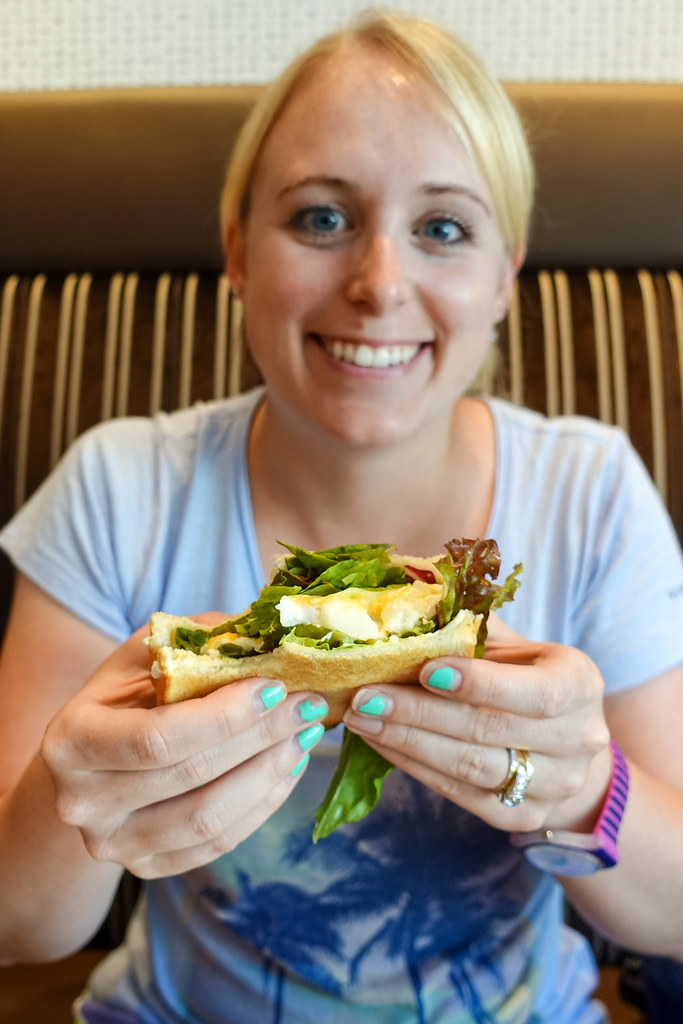
A useful tip that we found out from the tourist information desk in the main train station, was our JR Passes allowed free travel on the local city busses. These aren’t to be confused with the completely different sightseeing busses that look similar and run similar routes. Those require the purchase of a separate ticket. The JR busses are slightly less frequent, but considering they’re effectively free, that’s a minor drawback.

Higashi Chayagai District
Kanazawa is famed for this part of the city. The rows of “ochaya” – old wooden teahouses – are some of the best preserved in the whole country. They are traditional buildings where exclusive parties were hosted by geisha, which literally means “person of art”. They are schooled in various traditional arts, including classical dance, playing of musical instruments and other performance arts. Built in 1820, this exceptionally well preserved district has been designated as Japan’s Important Preservation District.
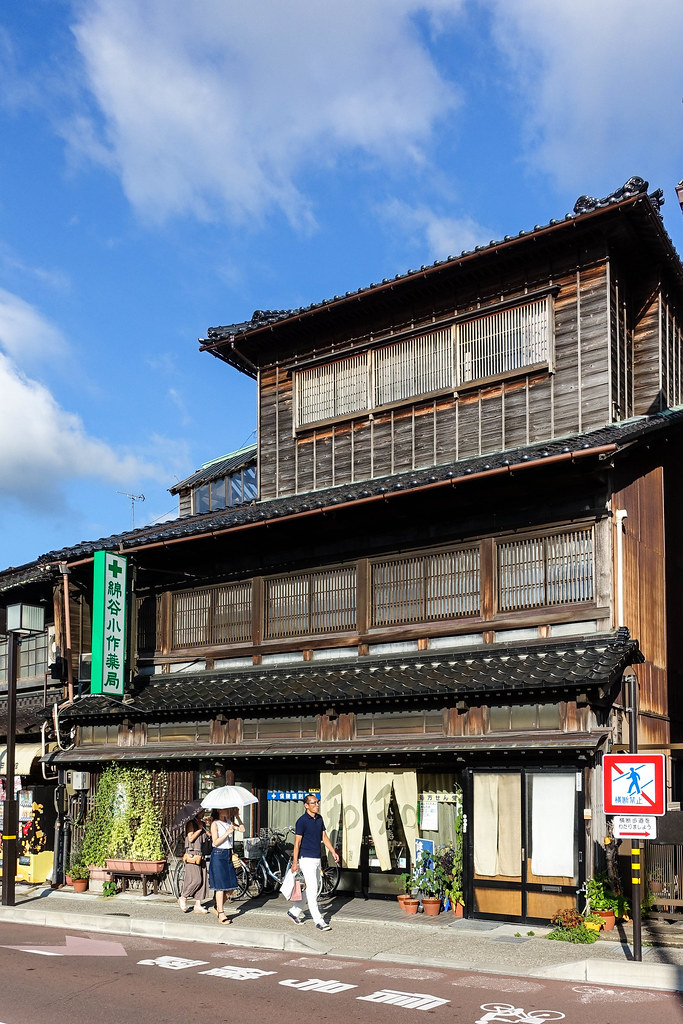
Back in the day, wealthy tradesmen and noblemen in the upper circles of society would frequent the ochaya. They attended tea ceremonies where geishas would play the koto (a Japanese harp), the shamisen (a three-stringed instrument), perform dances, sing and recite poetry for their guests.
Kaikaro
With over 195 years of history, Kaikaro is the largest ochaya in the Higashi Chayagai District and is one of the city’s registered historic buildings. A typical feature of the architecture of these houses is the kimusuko, the large slatted panels that let sunlight in but prevent outsiders from seeing into the building.
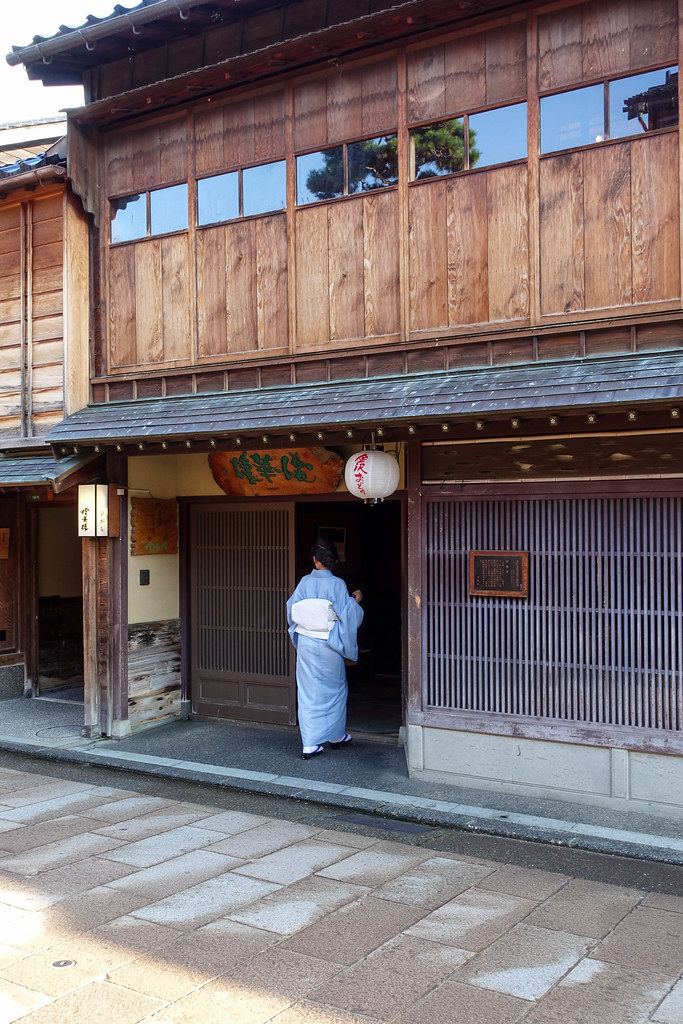
Visitors have the rare opportunity to see the interior of a traditional ochaya. Spread over two floors, the Ozashiki (banquet rooms) are located on the upper floor, divided by painted fusuma (sliding door panels) that were decorated to give each room a different atmosphere.
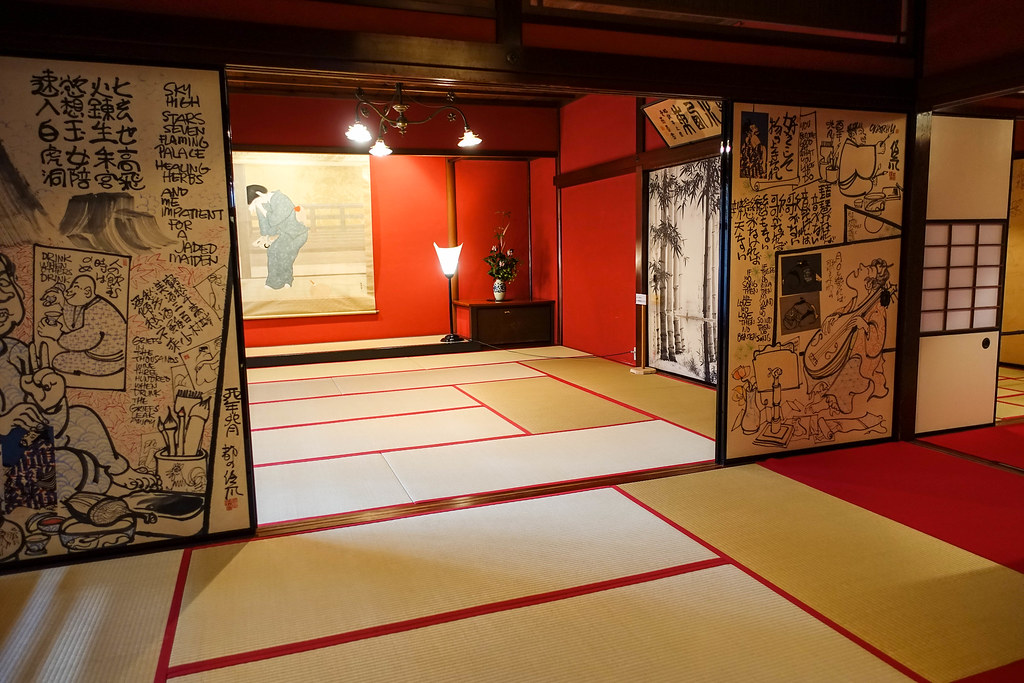
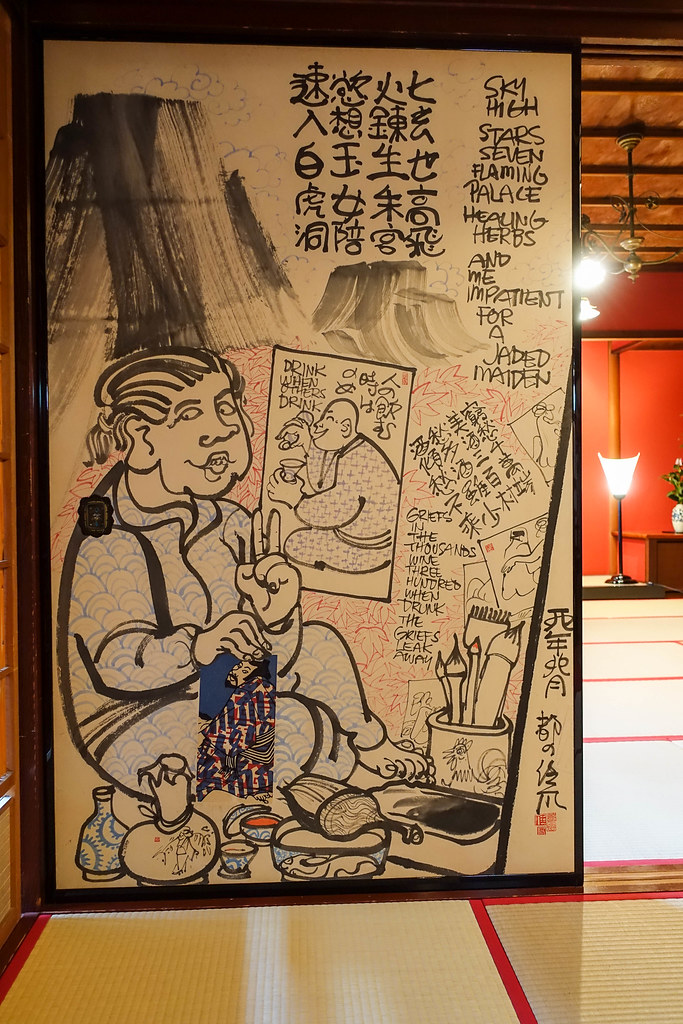
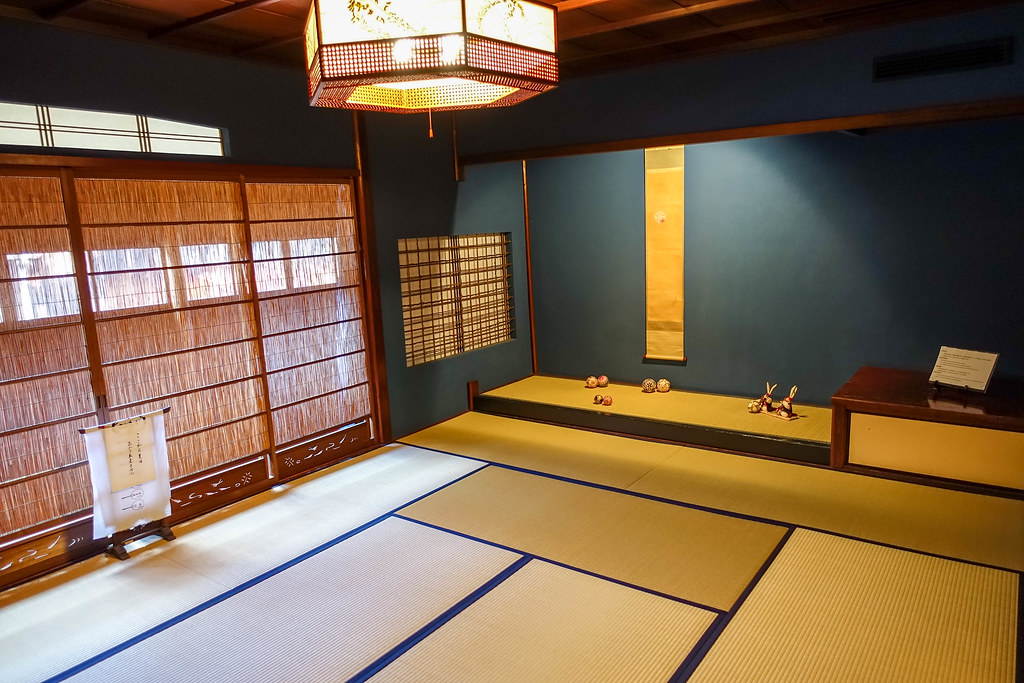


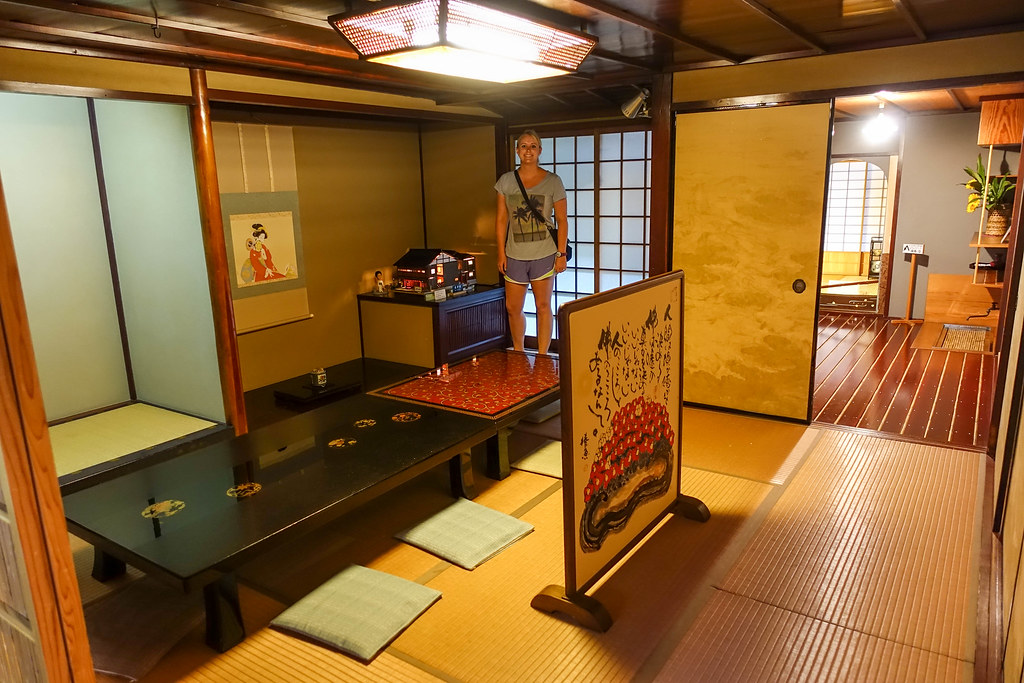

The most opulent room in the house is the Golden Tearoom. Instead of the usual straw tatami mats, these mats are made from Mizuhiki strings – tightly wound rice paper strings – that have been wrapped in gold leaf. Gold leaf is one of Kanazawa’s traditional crafts.
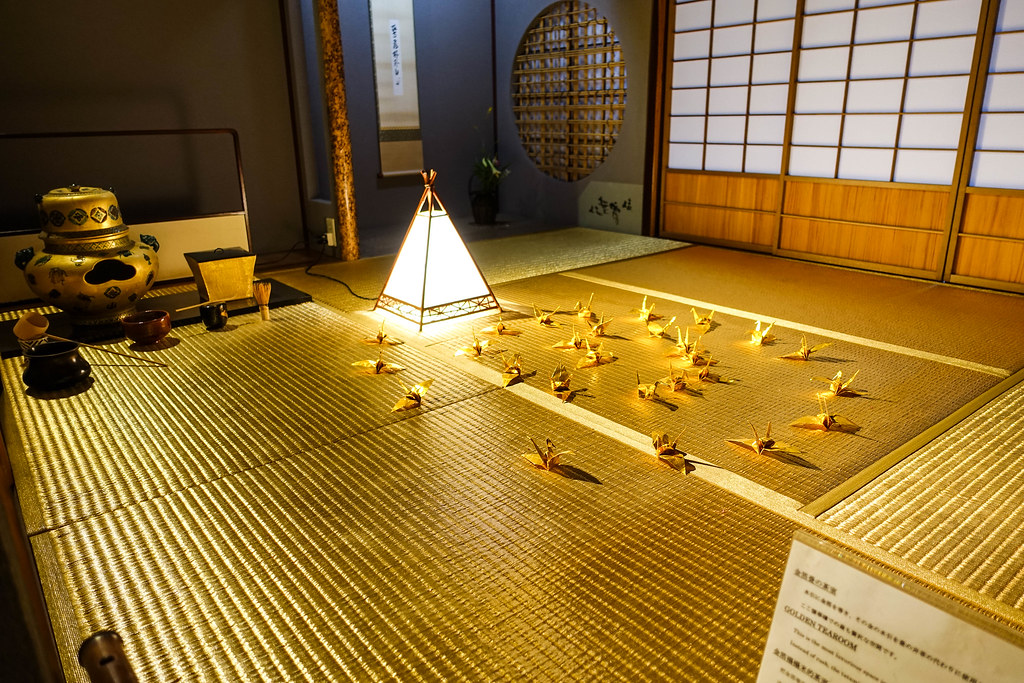

The ground floor has a traditional cafe with a sunken hearth that is still in use and serves green tea and confectionary to visitors.
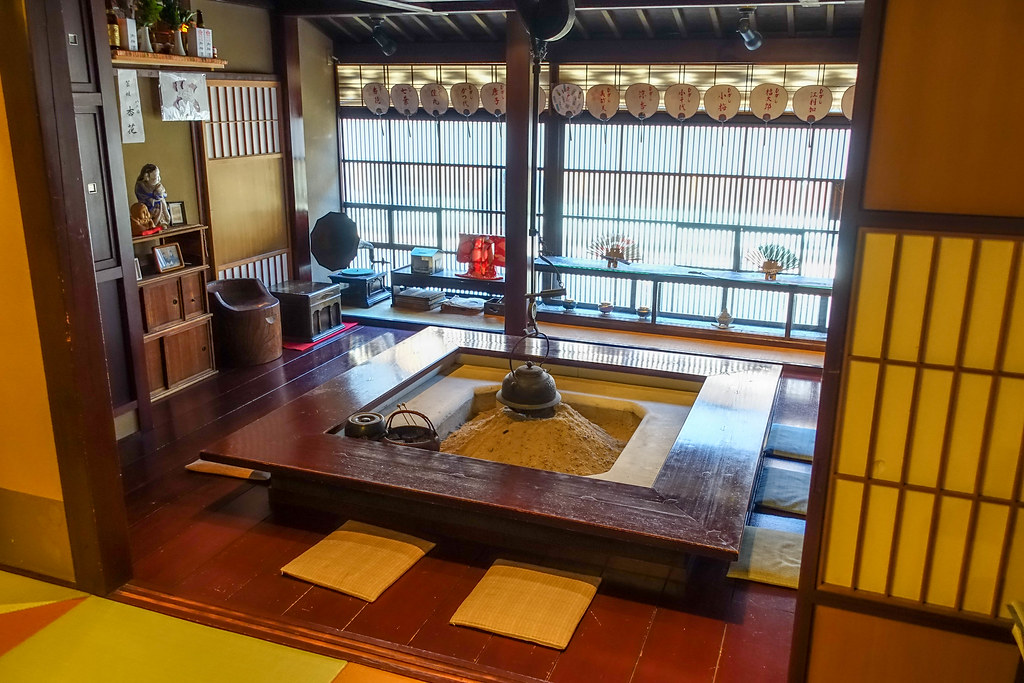
Shima
Another ochaya that can be visited is Shima, which is recognised as an important national cultural asset, rather than just at a city level.
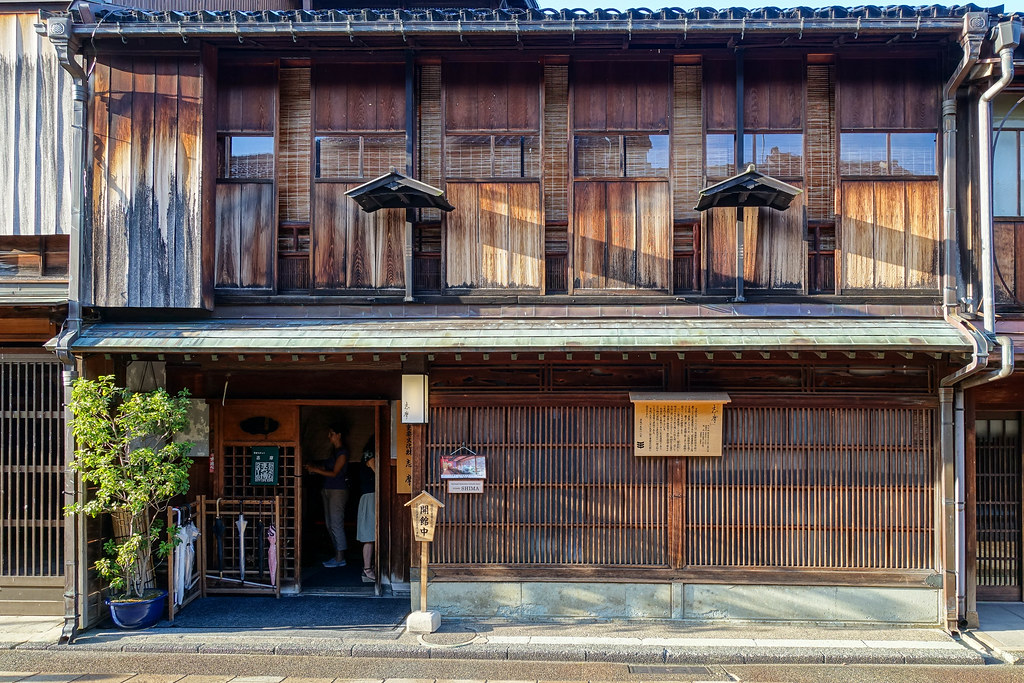
Inside there more artifacts on display within the rooms compared to Kaikaro.

The rooms are decorated to show the distinction between the guest rooms and the adjacent waiting rooms, where the geishas would be hidden from view until it was time for their performance, at which time the room would double as their stage.
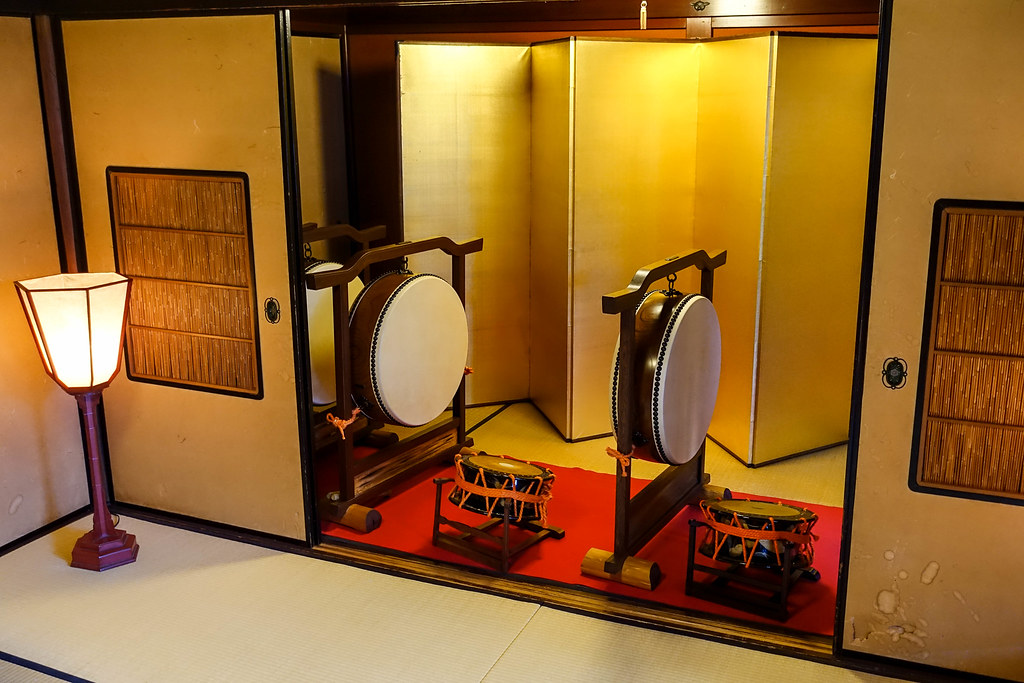

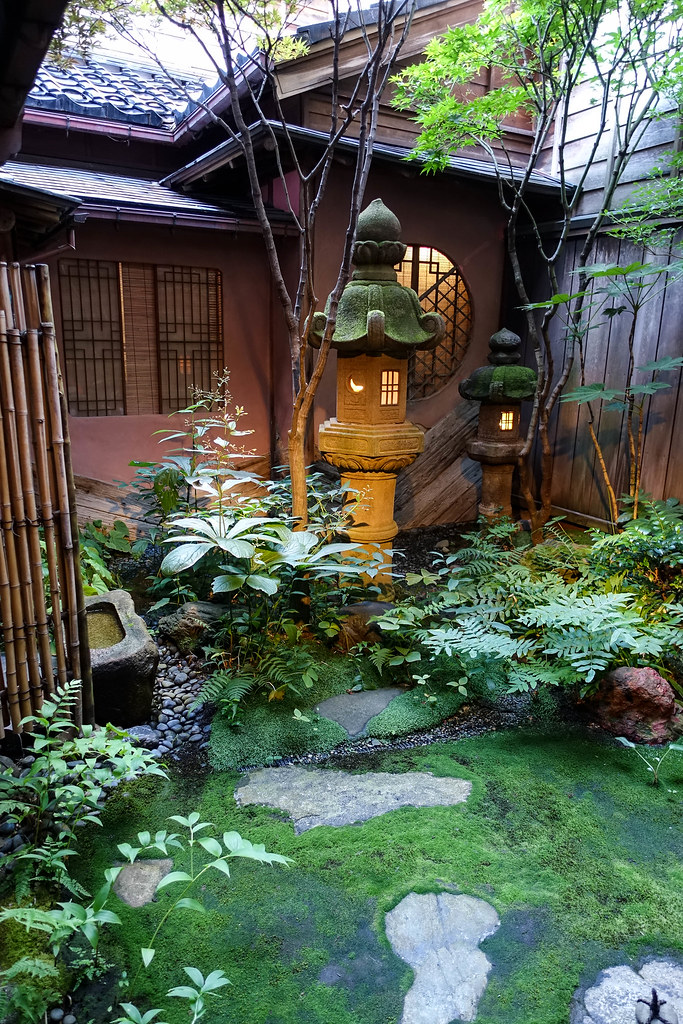

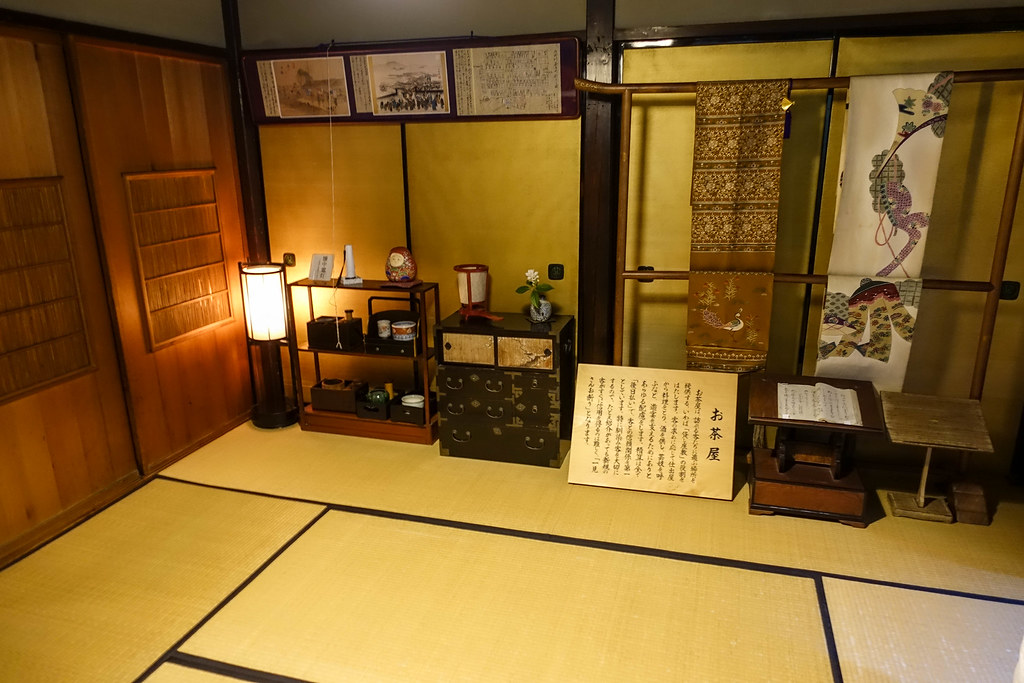

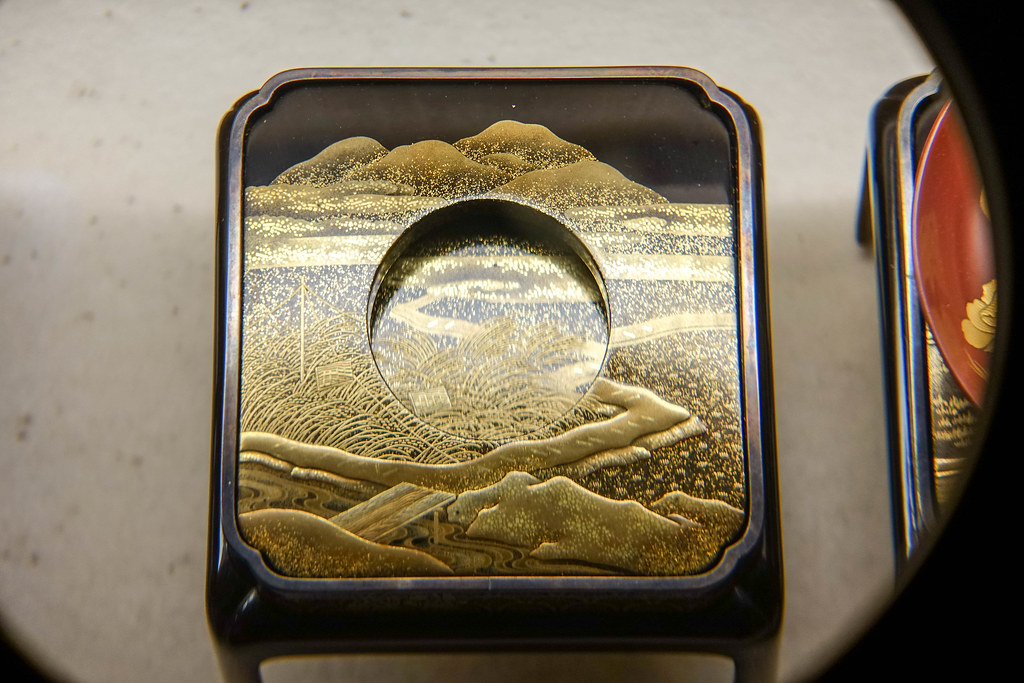
Handing money to a person is considered uncouth in Japan, which is why tipping isn’t customary. But geisha’s would receive tips from patrons who would first put their money inside decorative envelopes, which then made tipping more like gift-giving.
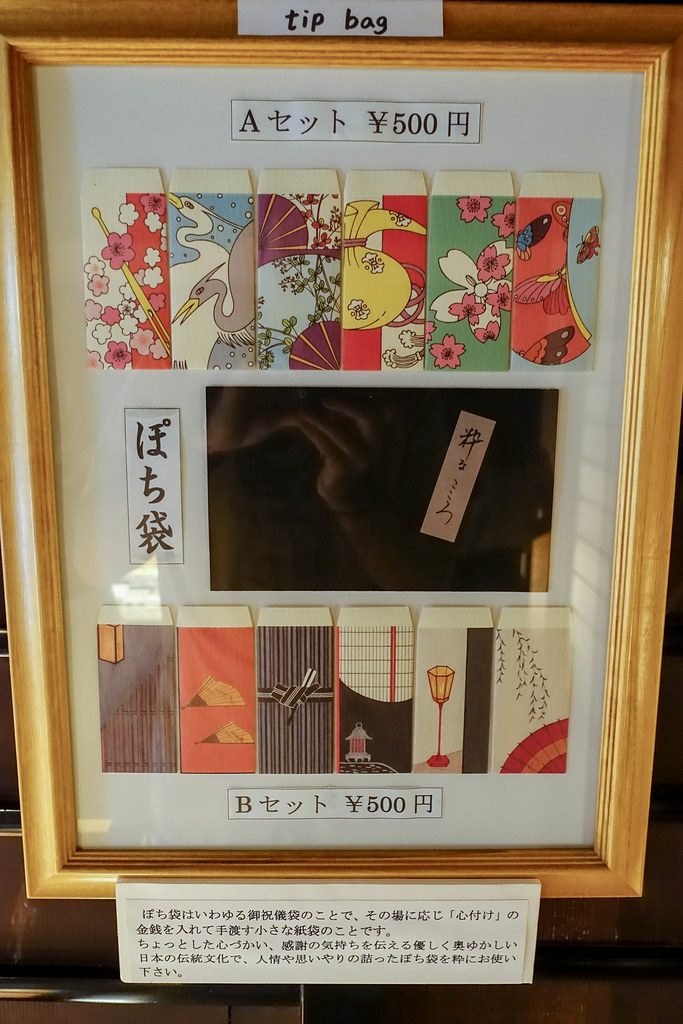
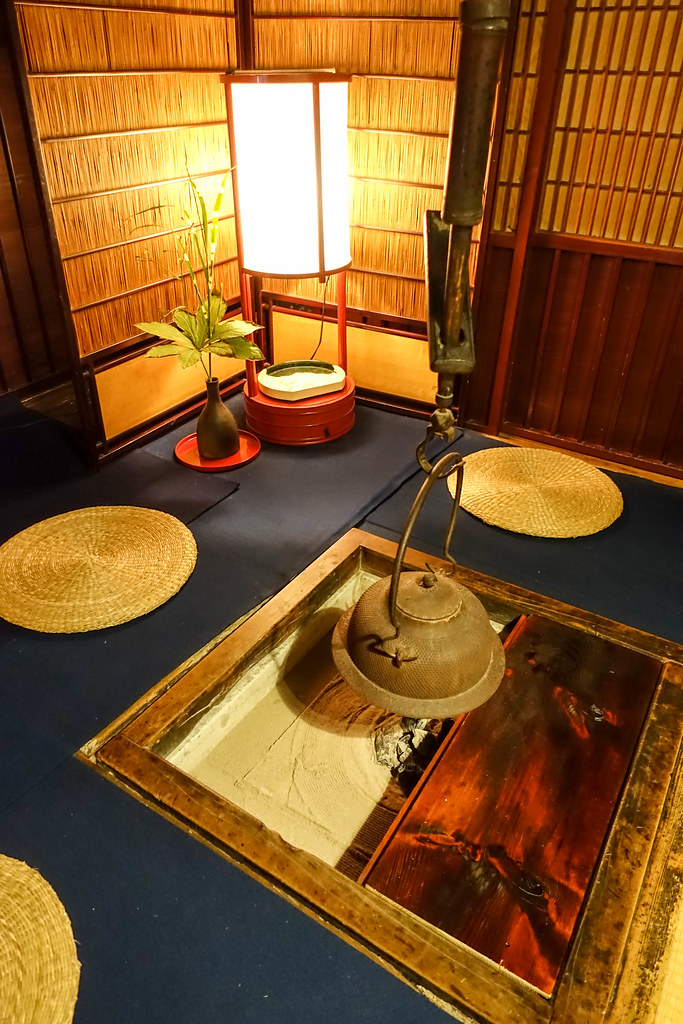

After dark the streets in Higashi Kuruwa quieten down and the whole area becomes rather peaceful and atmospheric.
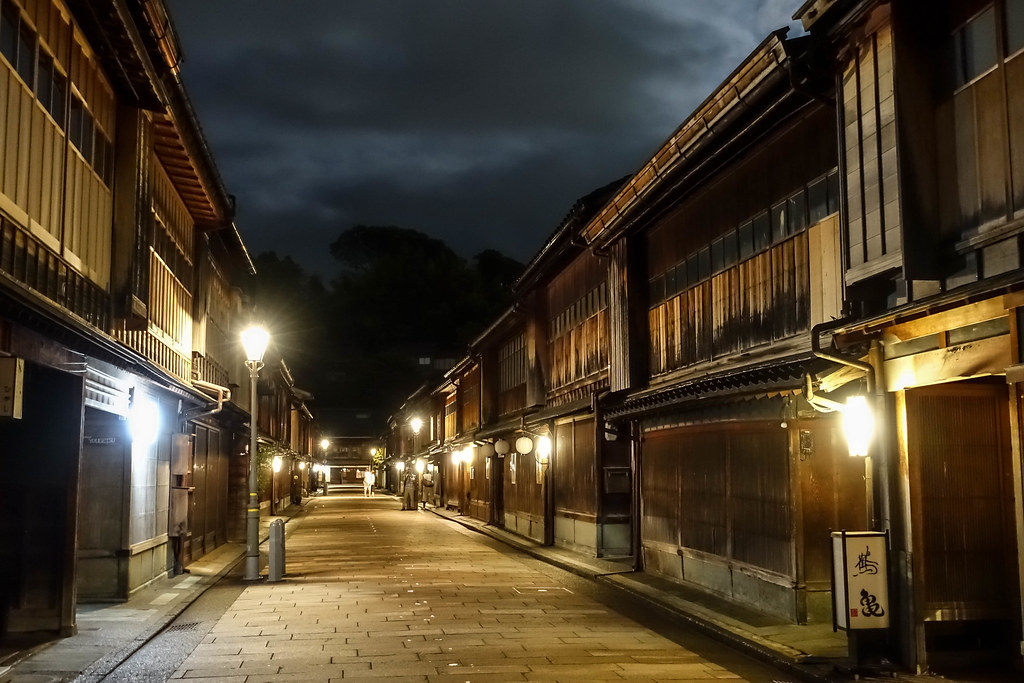


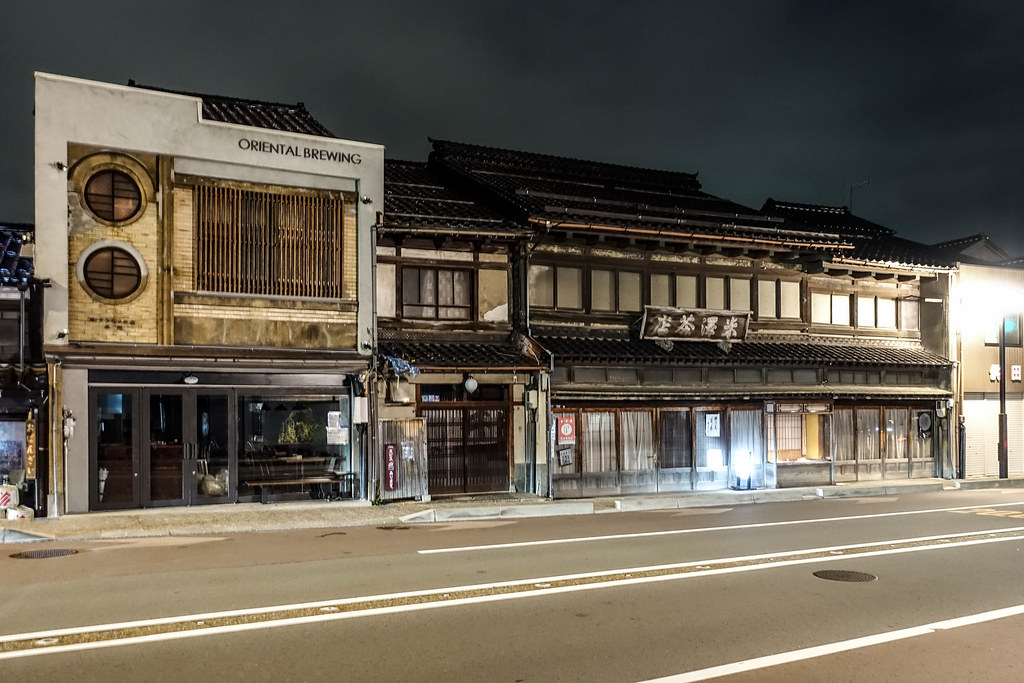
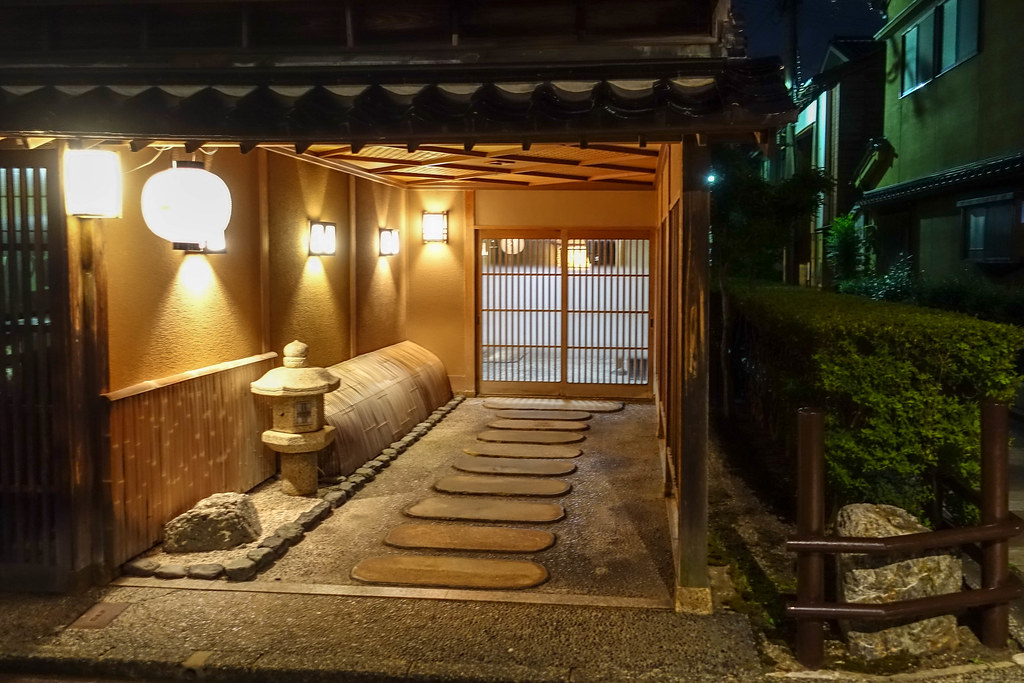
We were disappointed with by Kanazawa’s manhole covers that didn’t live up to the design standards we’d become accustomed to. Better ones must exist. Surely. Perhaps we just didn’t see them.
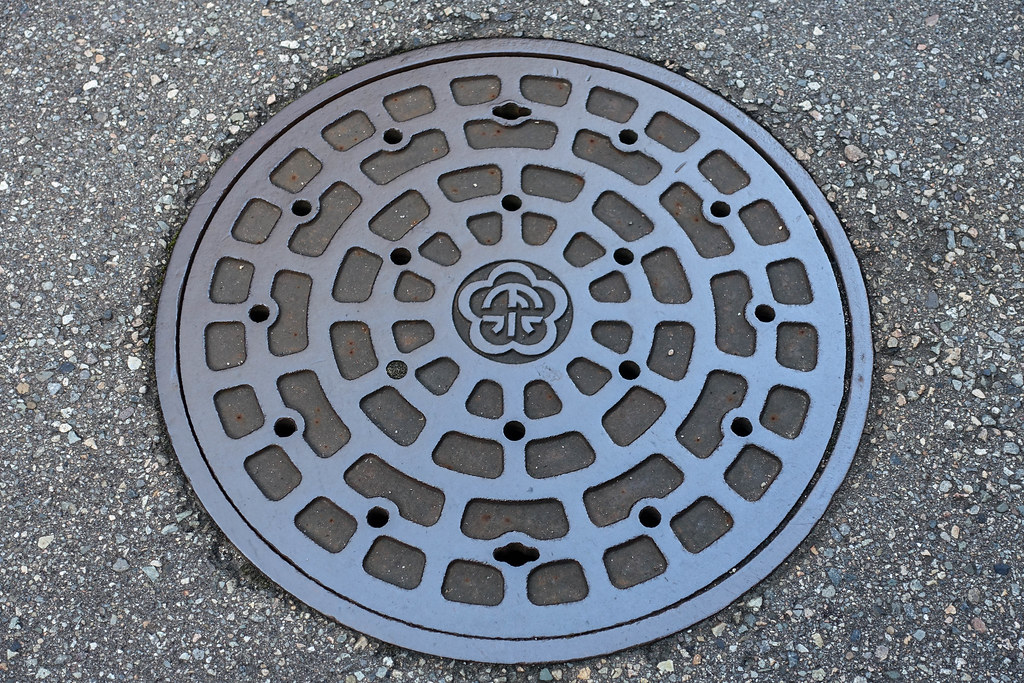

Kenrokuen Garden
This is renowned as one of the three best gardens in all of Japan, combining the six attributes of a perfect garden. It’s officially described as a “strolling-style landscape garden”, which I think is a fancy way of saying it’s big enough to walk through, as opposed to small “sit and stare at it” gardens. It’s themed into different areas using ponds and hills that showcase a variety of gardening techniques.

If you have a garden of your own, you may now be wondering whether yours has the six attributes of a perfect garden. They consist of three pairs of contradictions.
Spaciousness & seclusion: combining open space and scale, with nooks and crannies that are hidden away and require exploration to find.
Artifice & antiquity: combining aged plants and geological features with elements of obvious sculpture, such as training the growth of a tree and carefully placing rocks.
Water and panoramas: streams and ponds flow down to lower ground, while wide panoramic views are best enjoyed from a point of elevation.
Once you know to look out for these contradictions you can start to appreciate the significance of their concurrence.
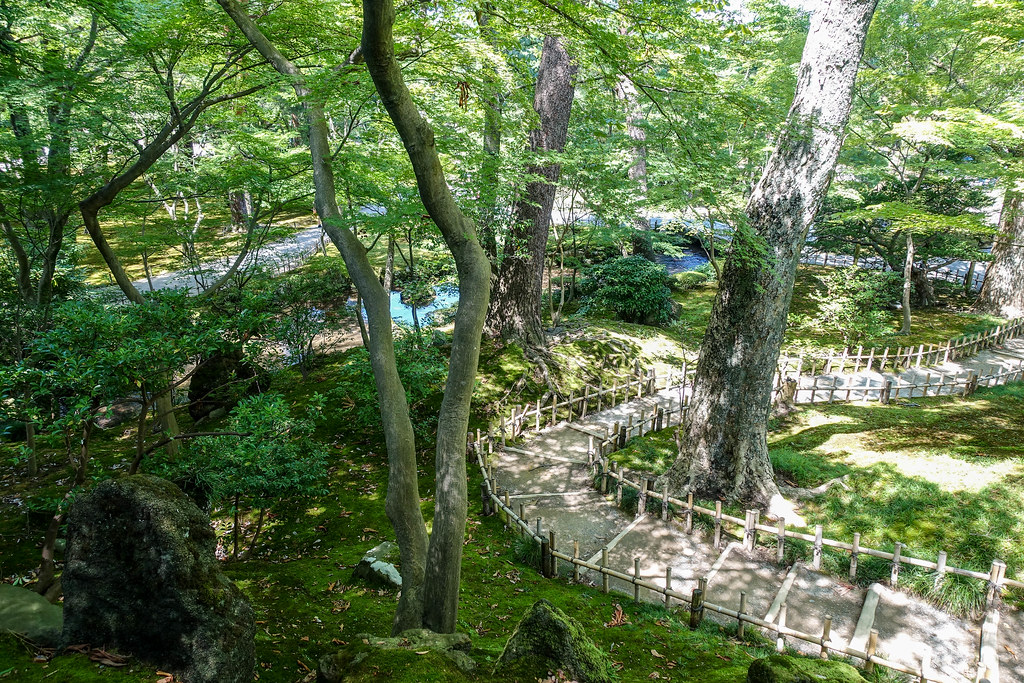
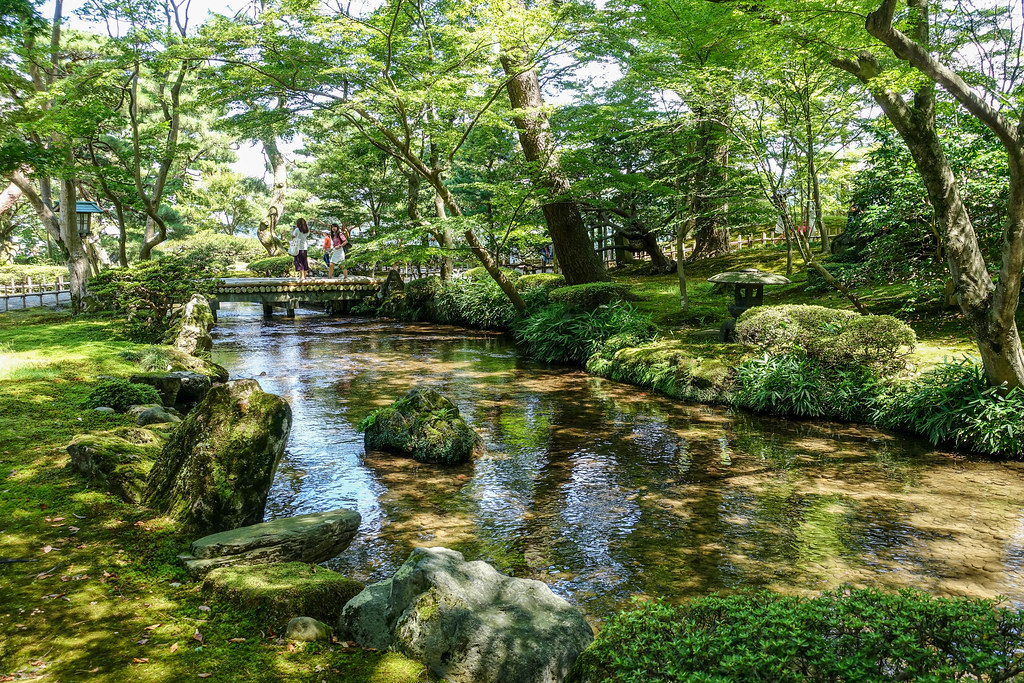

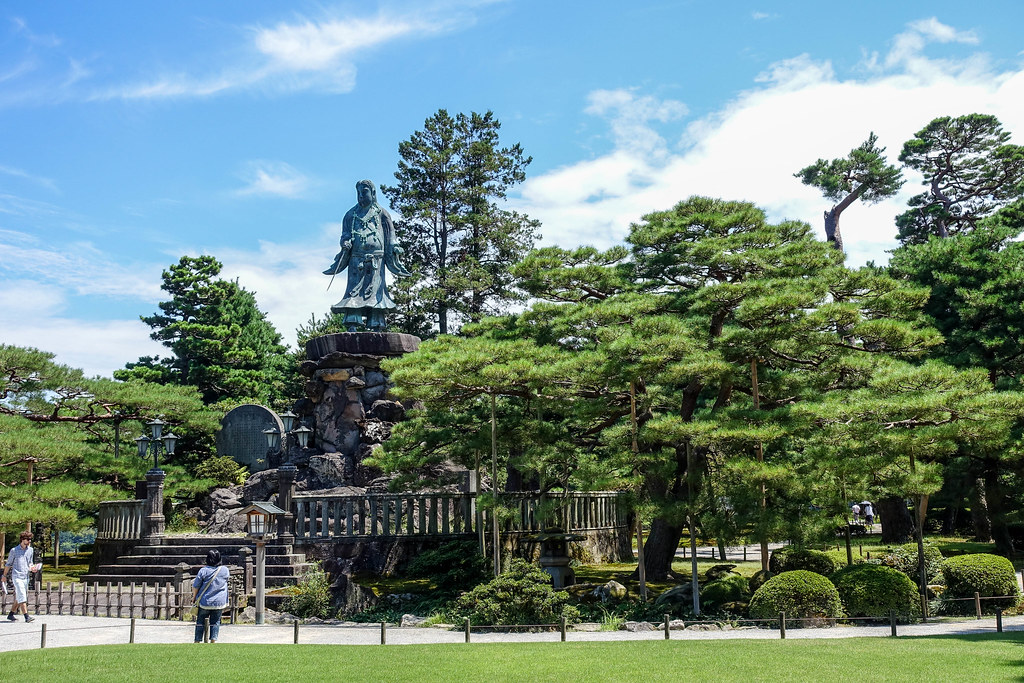

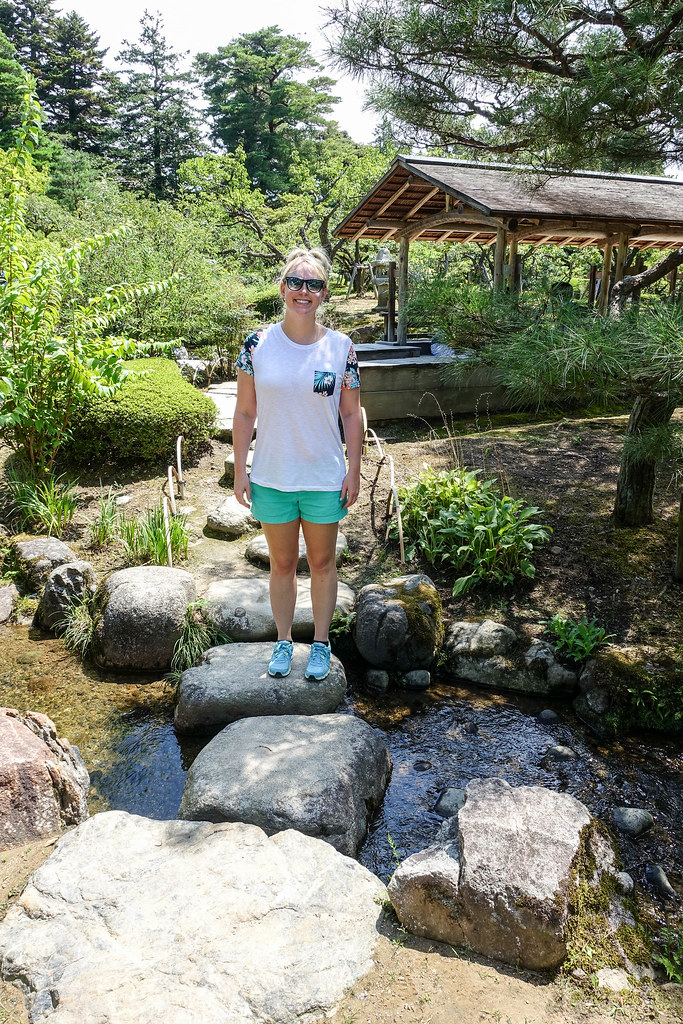
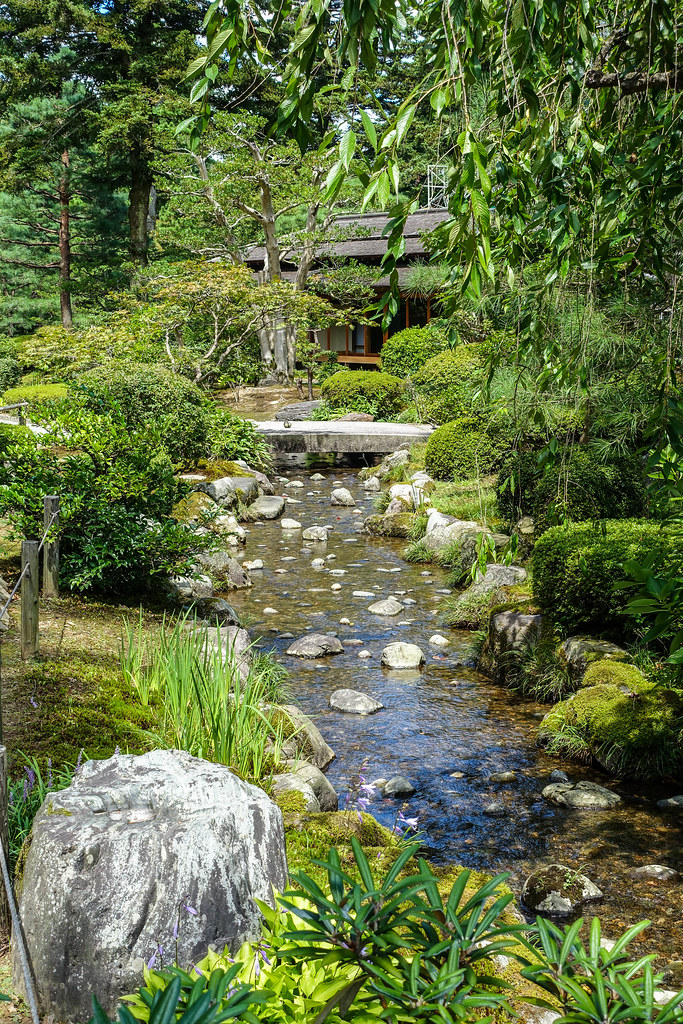

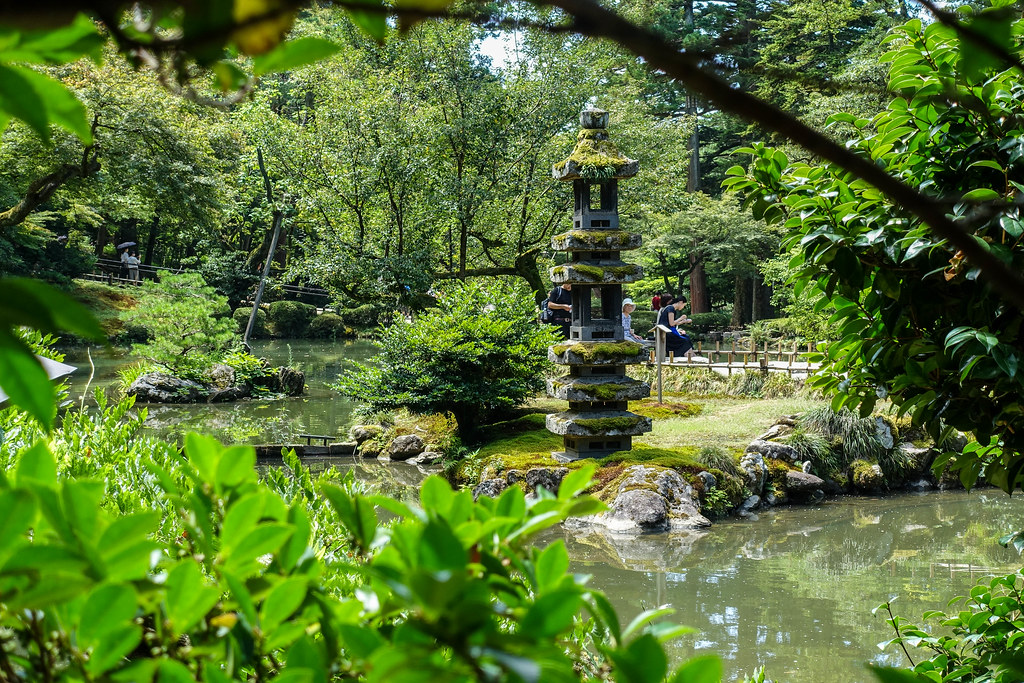
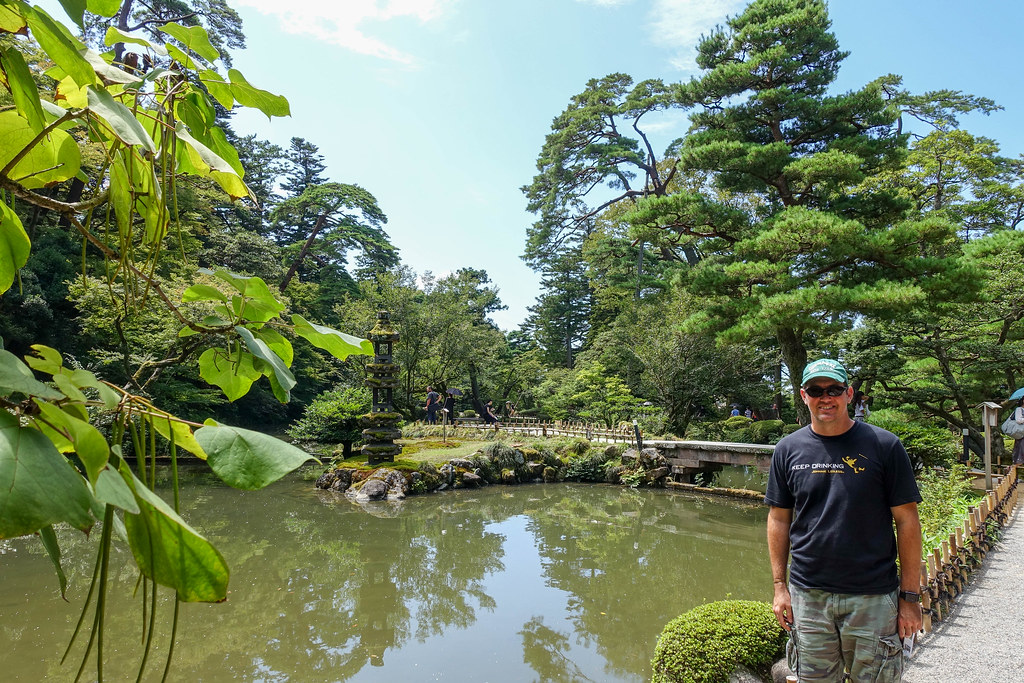
The garden has plant species from all across Japan, which is most apparent in the plum orchard which contains around 100 species of plum trees.


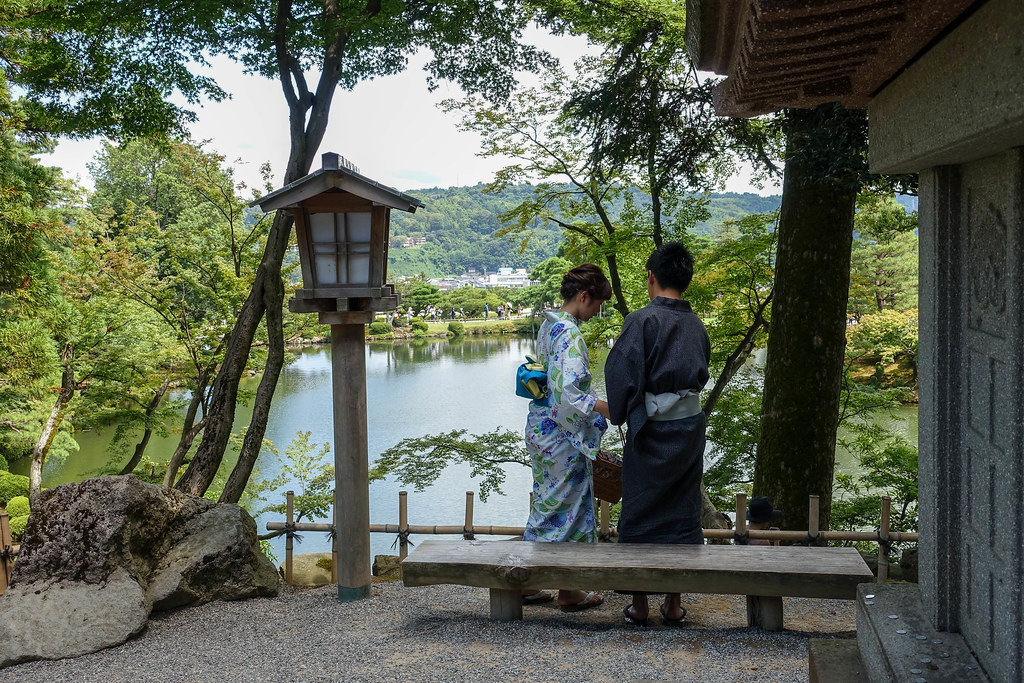
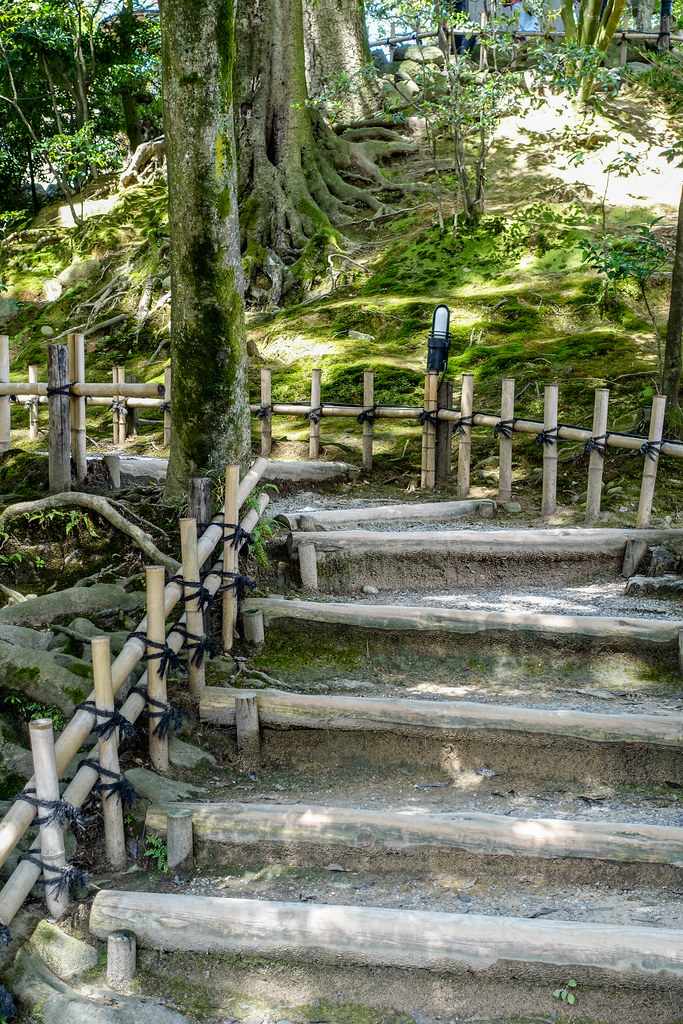
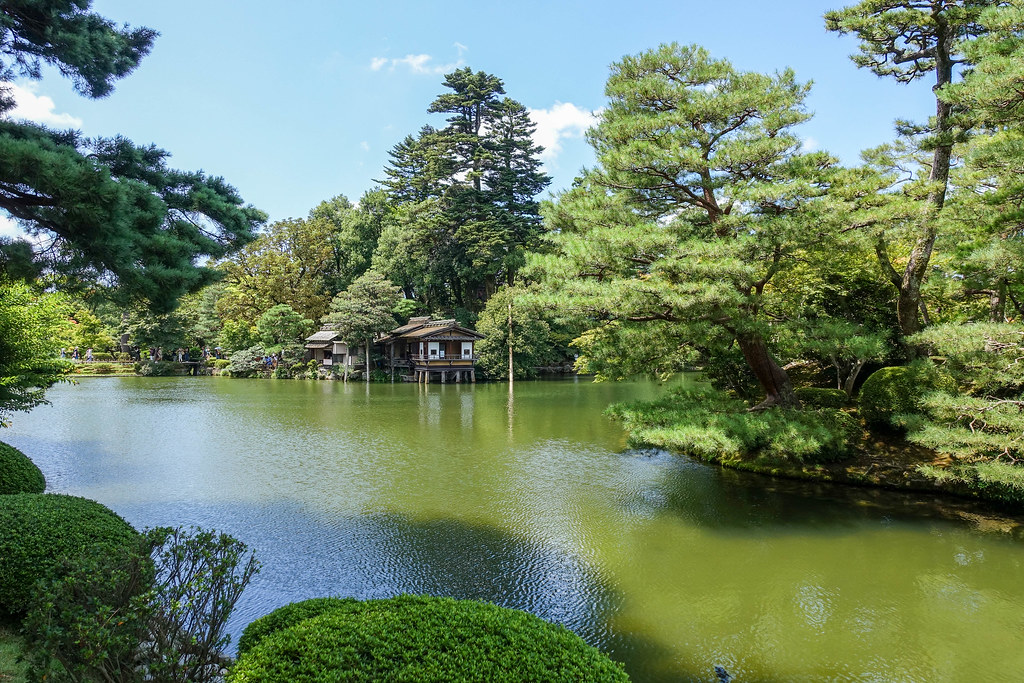
In winter the pine trees have huge cones made out of rope put up around them to shield the branches from the weight of snow. These yukitsuri are constructed in November and the sight and silhouette of the pines with their rope-cones are a unique and famous symbol of Kanazawa. Here is a photo from Wikipedia.
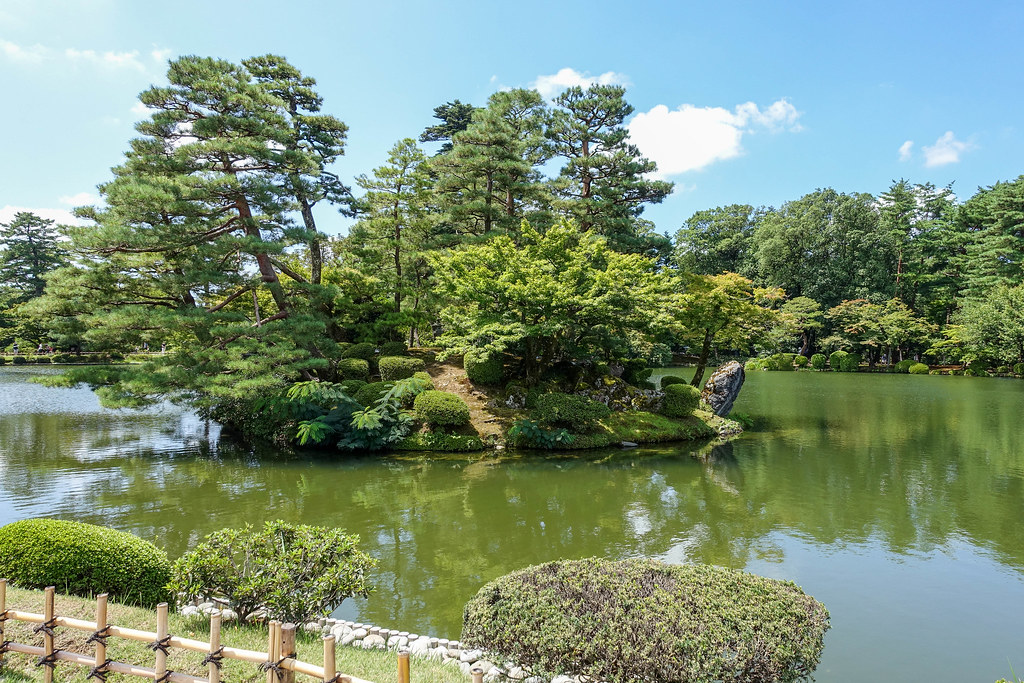
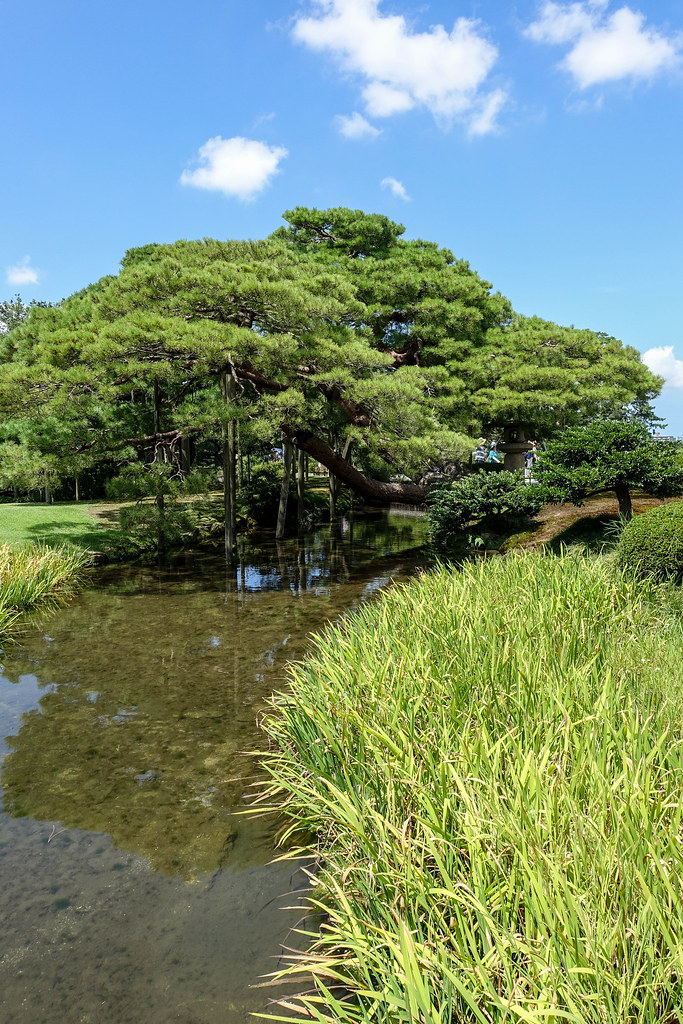
One of the special features of Kenrokuen Garden is apparently how it changes with the seasons. But we just got to enjoy it in the baking heat of mid-summer and as a result our visit was very goal-oriented to see all the sections of the garden in an efficient and shade-covered way.
Kanazawa Castle is next to Kenrokuen. We took a brief walk through the castle grounds but didn’t go inside since we heard it’s empty and there’s not a lot there to see.
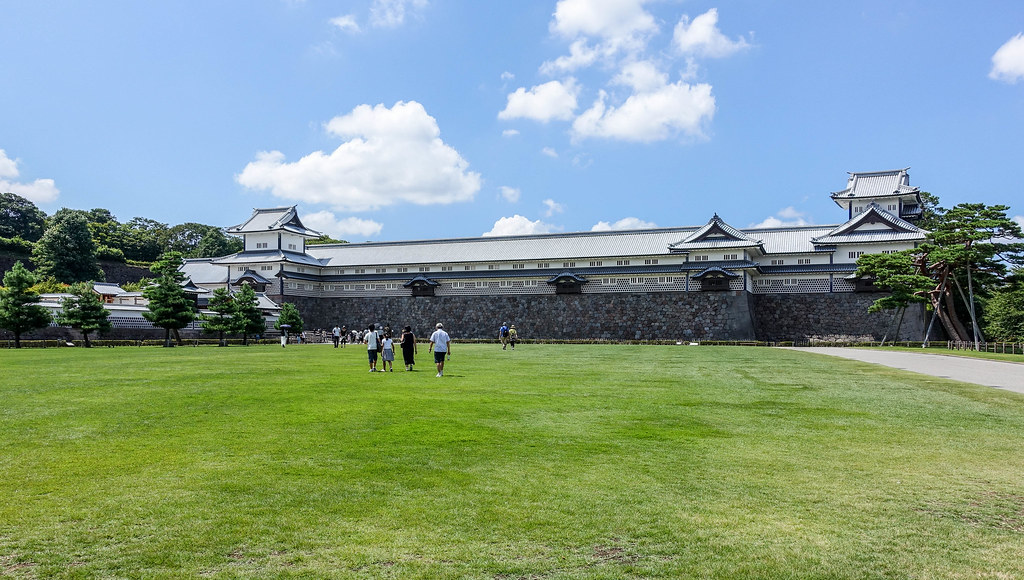
A highlight of the castle is its Kahoku-mon gate that serves as the main entrance. It comprises a first gate, a second gate, the courtyard between them, and a watchtower. The first gate is listed as an important cultural asset of Japan.

Omi-cho Market
Nicknamed “Kanazawa’s Kitchen”, the city’s largest fresh food market started in 1721 and today sells everything you can think of, and a whole lot more that you haven’t. It’s a series of covered streets lined with around 200 shops and stalls. Most of these specialise in local seafood and produce.
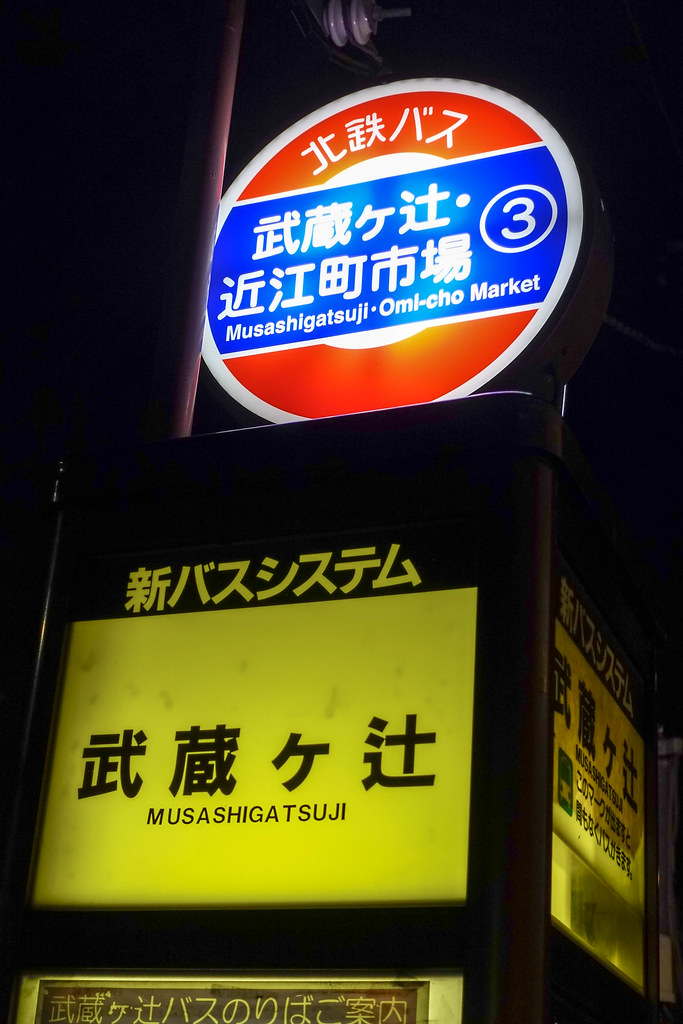
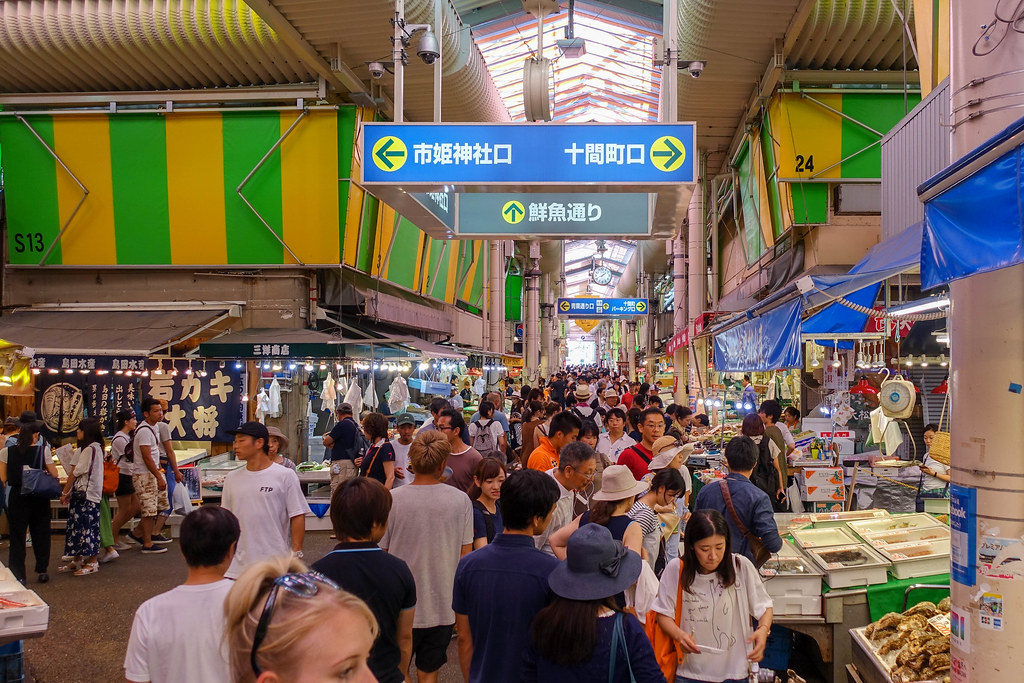
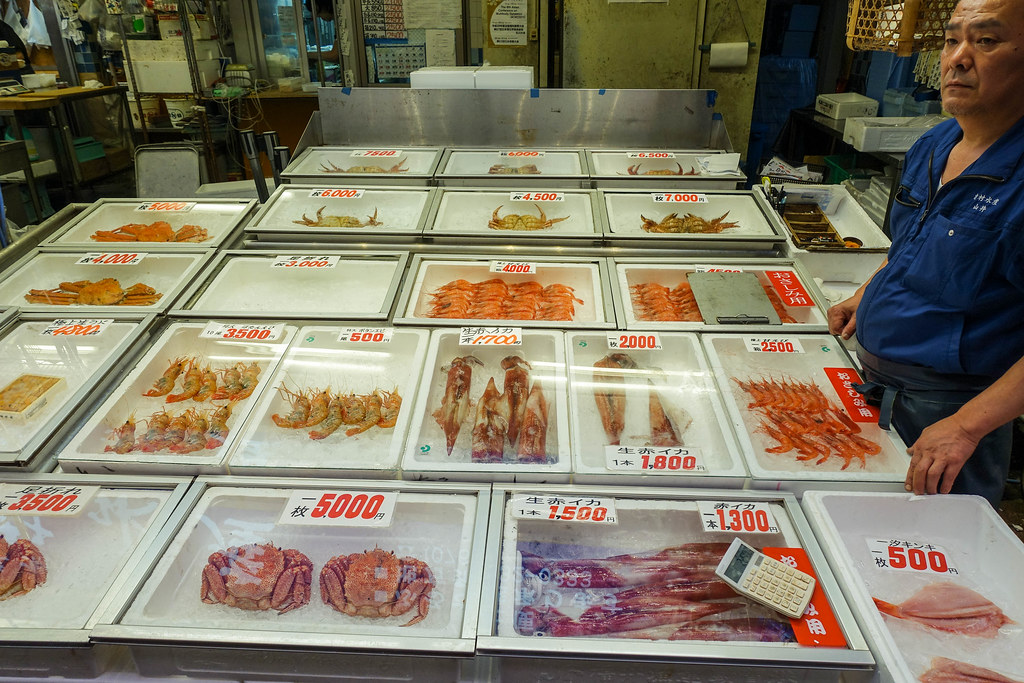
We started off buying two apples and two pears, the pears were washed and sliced for us by the lady at her stall. They were so good we couldn’t resist buying some more for our train journey later in the afternoon. The fruit was huge and everything we sampled tasted phenomenal.
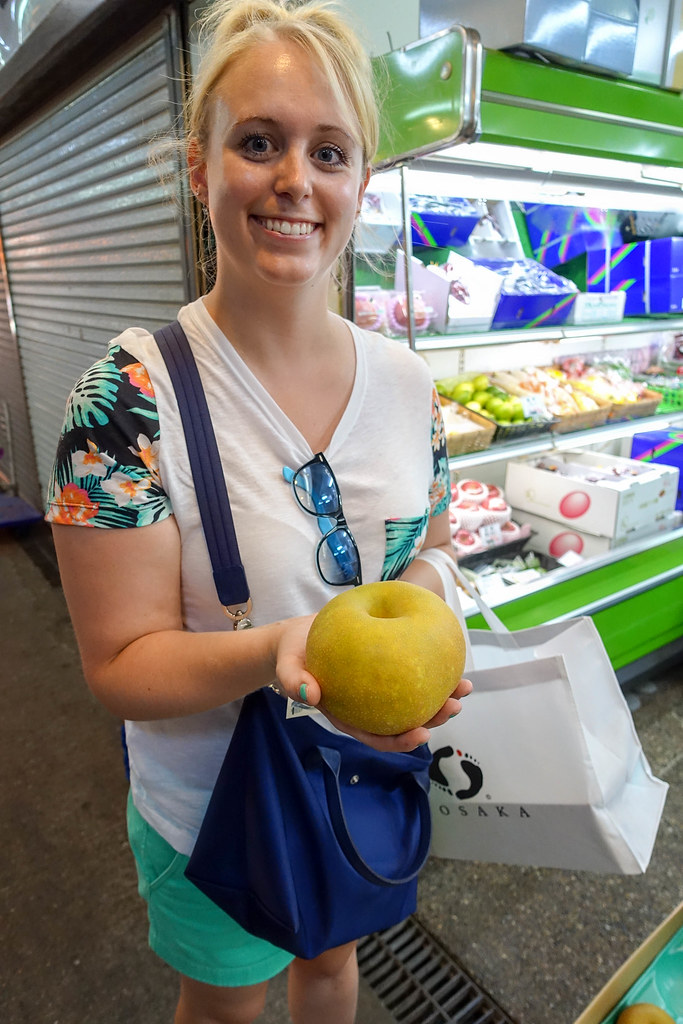
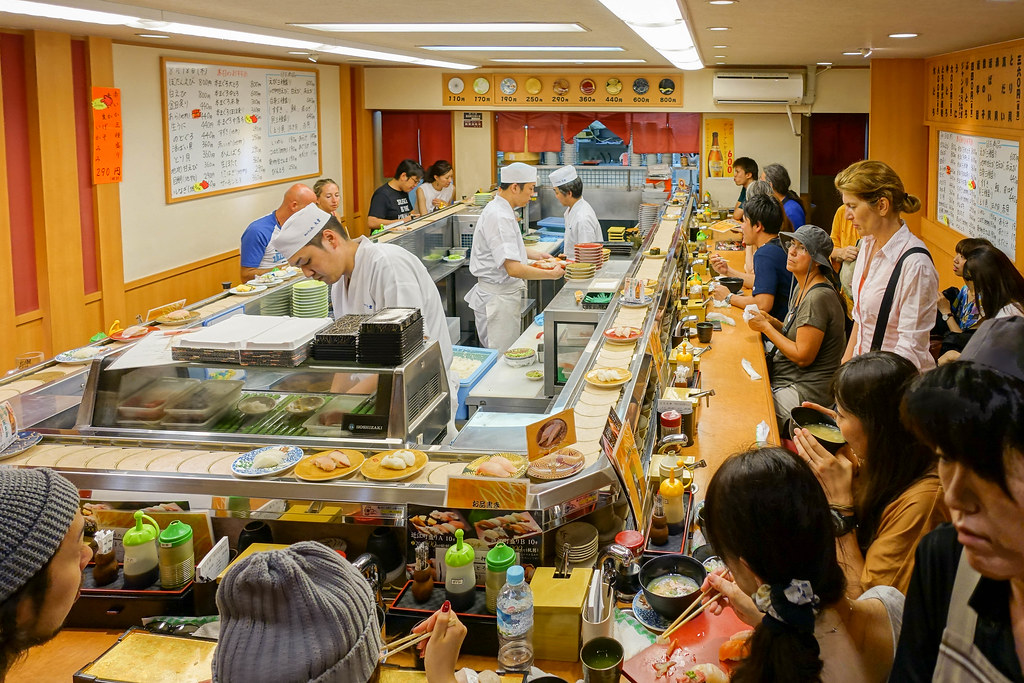
After our fruit snack, we tracked down a conveyor belt sushi restaurant called Sushi Okura. I had read that Kanazawa had a reputation for excellent sushi, and it certainly didn’t disappoint. It was possibly even better than what we had at Tsukiji Market in Tokyo, and nowhere near the same prices. We both agreed Kanazawa was worthy of a return visit just for the sushi alone. And with the city now only 2h40 from Tokyo on the Shinkansen, you may even get served sooner than someone queueing at Tsukiji!

All of the sushi restaurants in the market were constantly busy, and there was no pre-planned strategy for choosing Sushi Okura other than we could get in. It’s not on Trip Advisor (we looked) but if it were it would be way up there. It’s owned and operated by a national seafood wholesale company and this is their only restaurant in the country. The conveyor had the standard sushi doing the rounds but what we really wanted to try was the fatty tuna. This was only made to order, so with some assistance from the waitress we pointed at the menu and she called out to the chef on our behalf. Even though she spoke no English, our system worked perfectly.


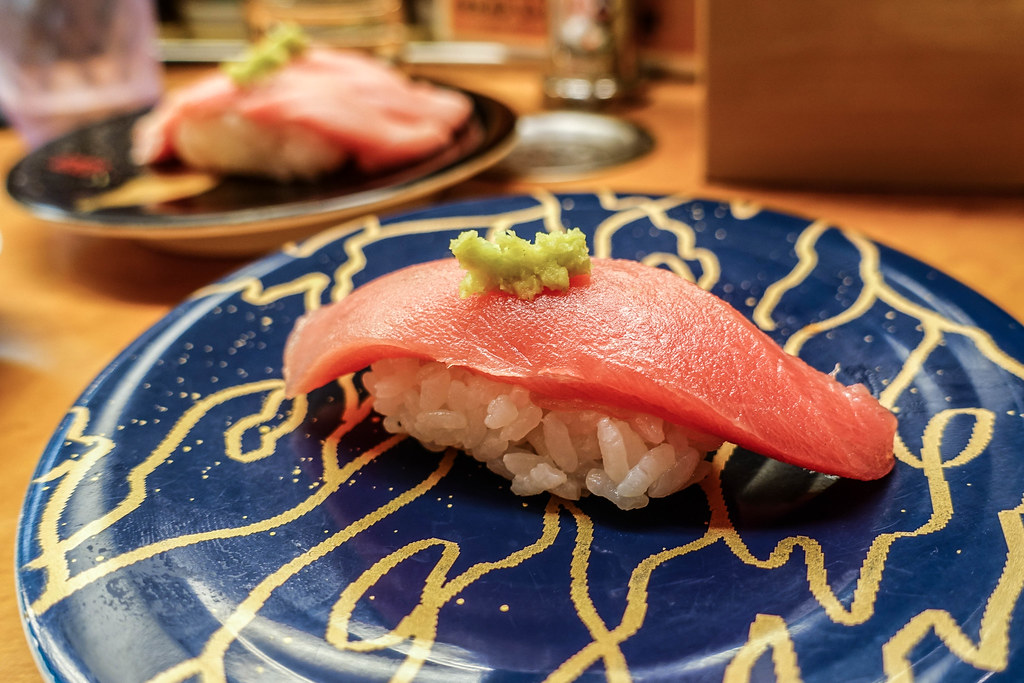
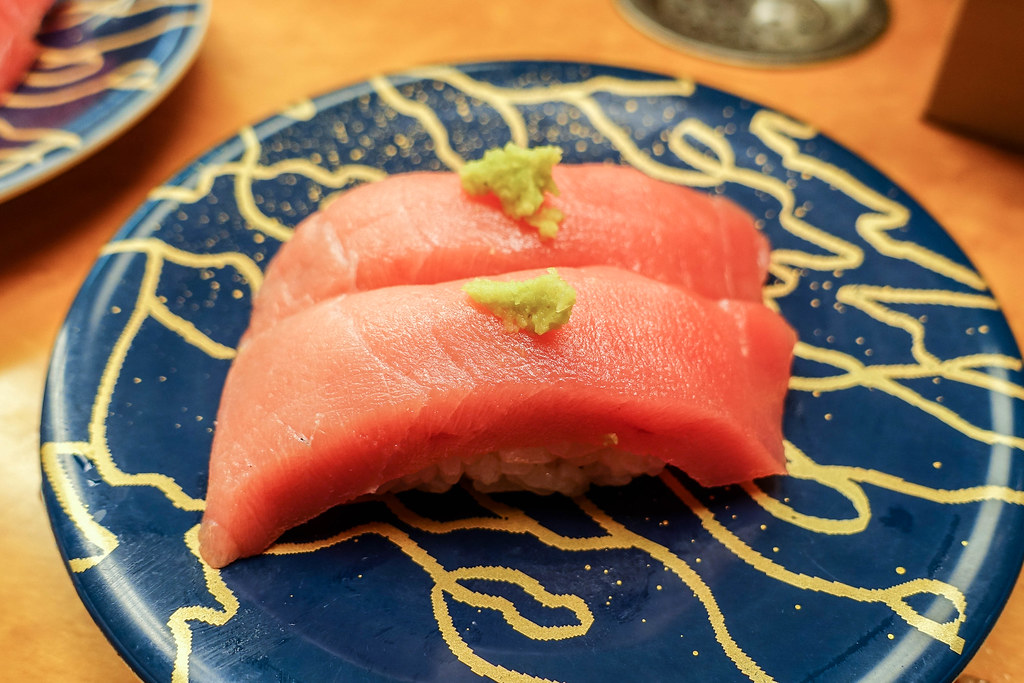
The medium fatty tuna was good, but the fatty tuna was to die for. Honestly, it was that good. Texture that dissolved in your mouth and flavour like no sushi either of us had ever tried before. Simple, no fancy condiments, just fish and rice with a hint of wasabi. Phenomenal!
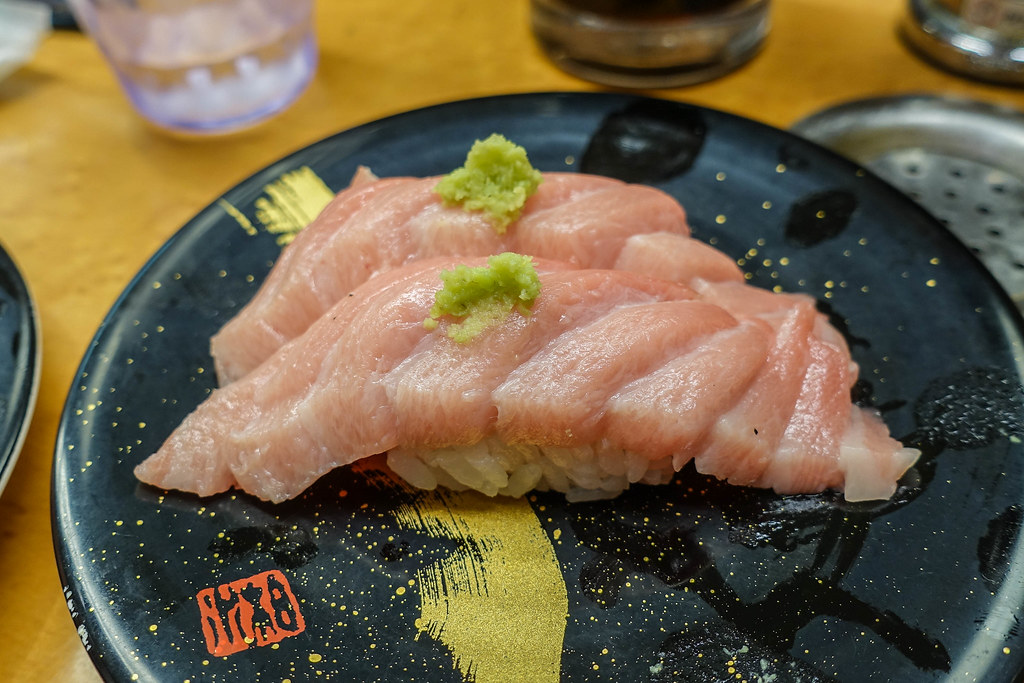
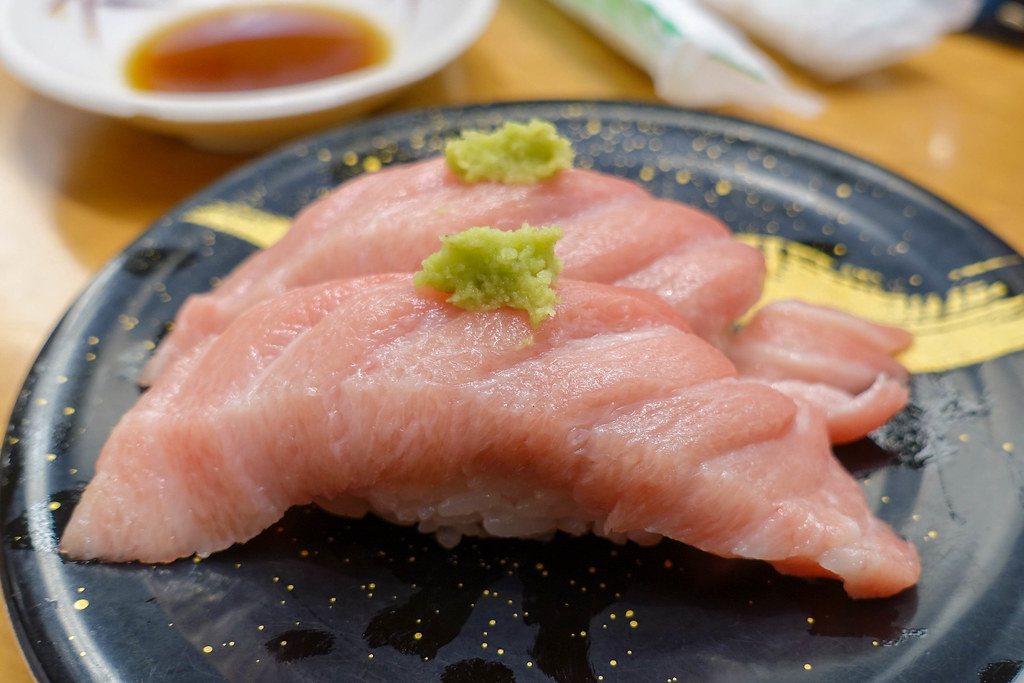
It’s quite possible that any of the sushi restaurants in Omi-cho market serve sushi this good, but if you happen to find yourself there, this is how to find Sushi Okura. First, go to this entrance to the market at the south-west corner.

From that entrance, the restaurant can be seen just ahead on the right (centre of picture).
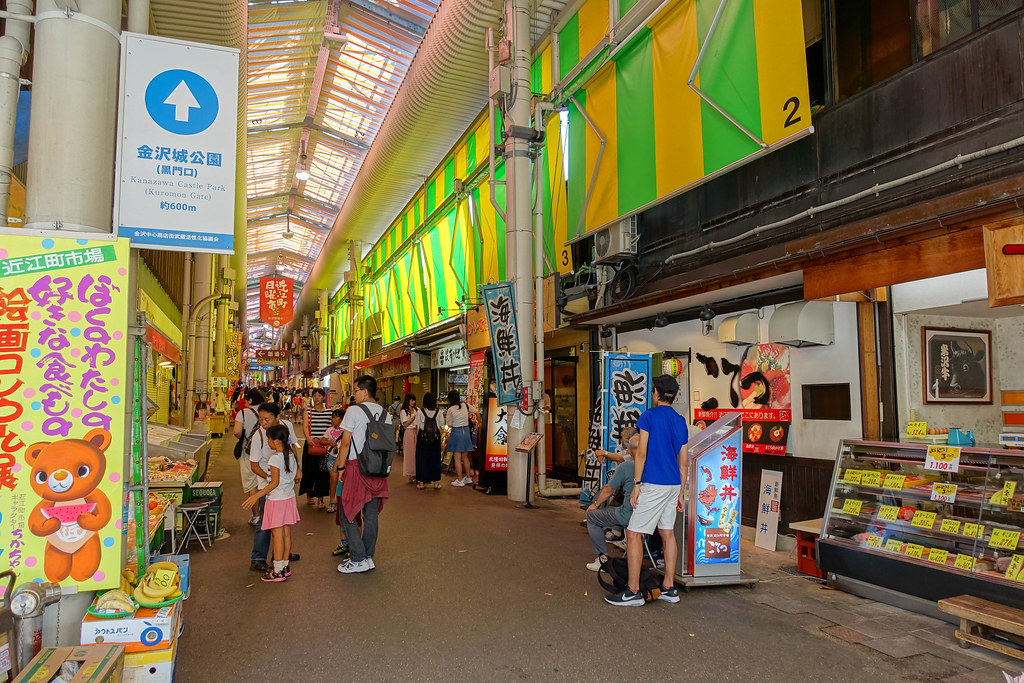
And here it is – Sushi Okura (かいてん寿し大倉) – map

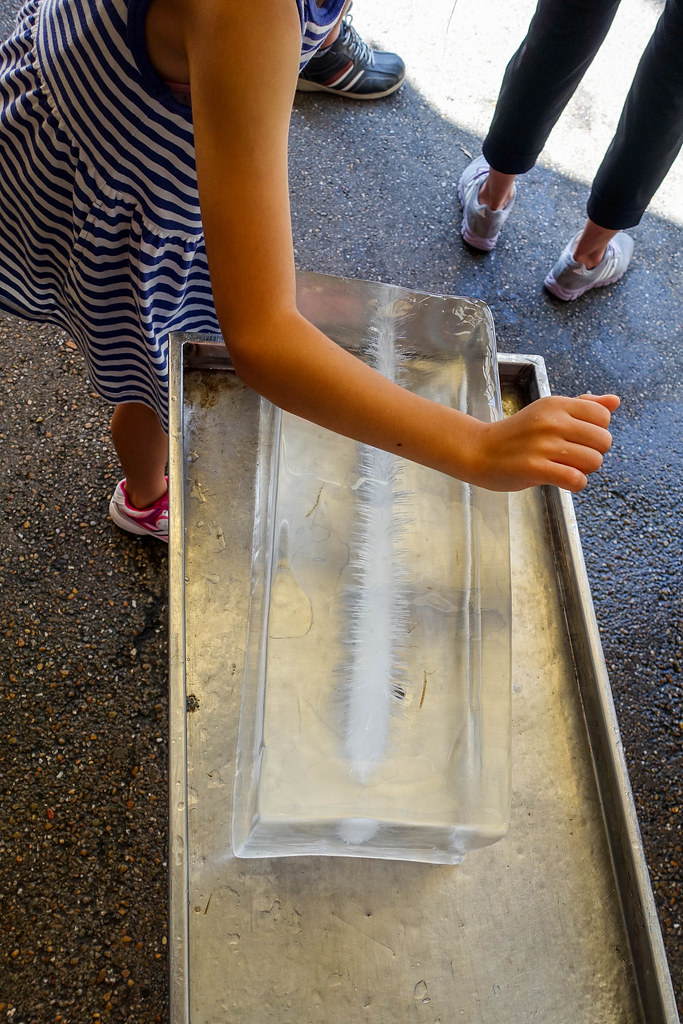
99% of Japan’s golf leaf is produced in Kanazawa. It therefore stands to reason, that there are a lot of items for sale that incorporate gold leaf. If you want to bling your iPhone, this is the place to do it.
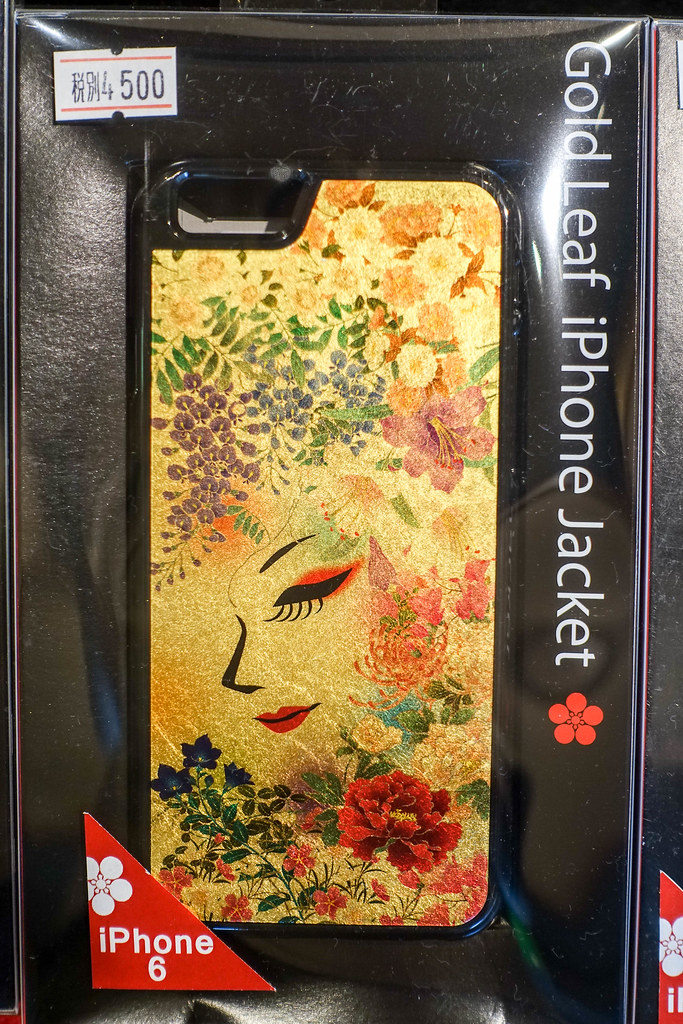
Seriously, there is nothing that can’t be improved with gold leaf in this city. There are even soft serve ice cream cones dipped in gold leaf!


We found a really interesting little shop called Meboso that sells fly fishing lures and jewelry made using the same techniques. We bought a set of feather fly fishing lures for Jan’s dad. Fly fishing became popular in Kanazawa during the Edo period and making these lures is one of the traditional skills of the city. A craftsman can make up to 30 lures in a day. The shop offers a hands-on class where you can learn to make a feather brooch (advanced reservations required so we didn’t partake).
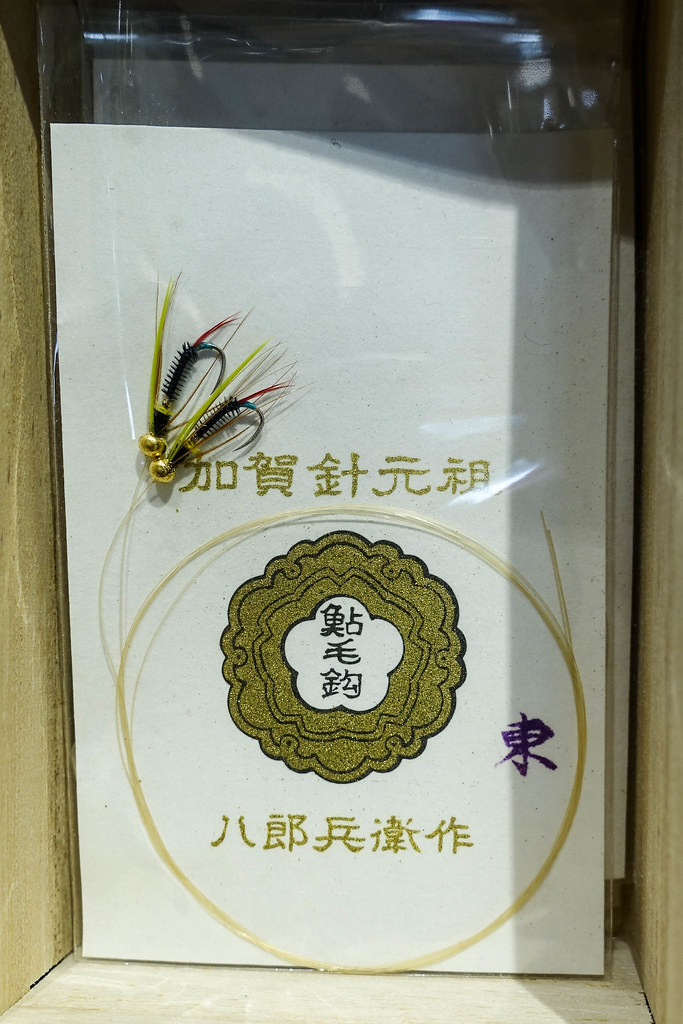
Jan fell in love with a pair of locally-made geta sandals and was served by two extremely friendly and helpful shop assistants. Long story short: they helped find the largest pair in stock (Japanese women have exceptionally small feet) and then kept that pair aside overnight so we could return the following day with our passports to buy them and get the tax-free refund. We thanked these lovely ladies with a beaded bracelet and rhinoceros from South Africa which they were over the moon about. I’ve mentioned in a previous post but it’s worth saying again: gifts from your home country earn tons of brownie points in Japan, especially if they’re hand made.
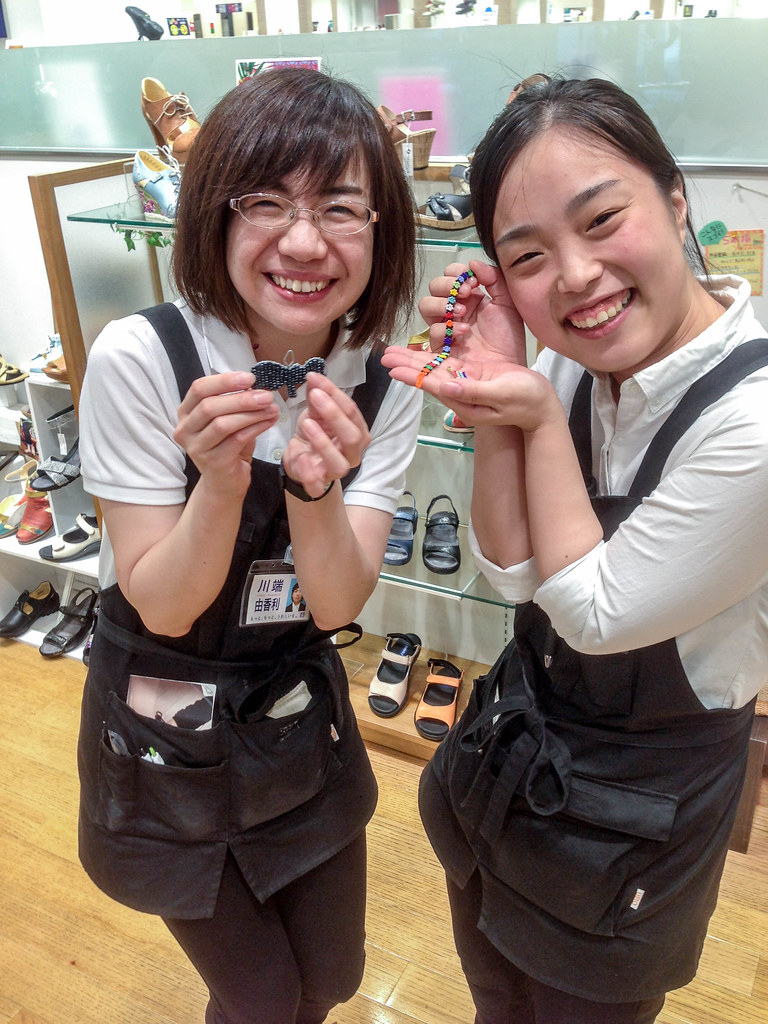
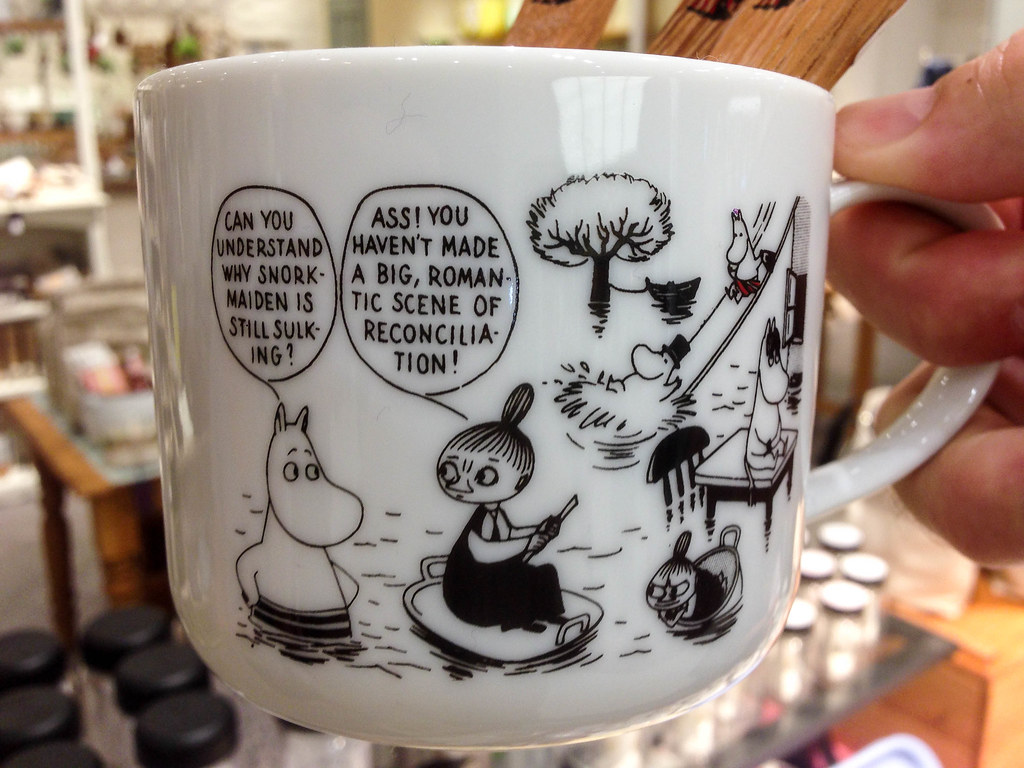
Tsuzumi Gate is a striking feature contrasted with the steel and glass of Kanazawa station. It’s wonderful example of tradition infused into modern Japan.
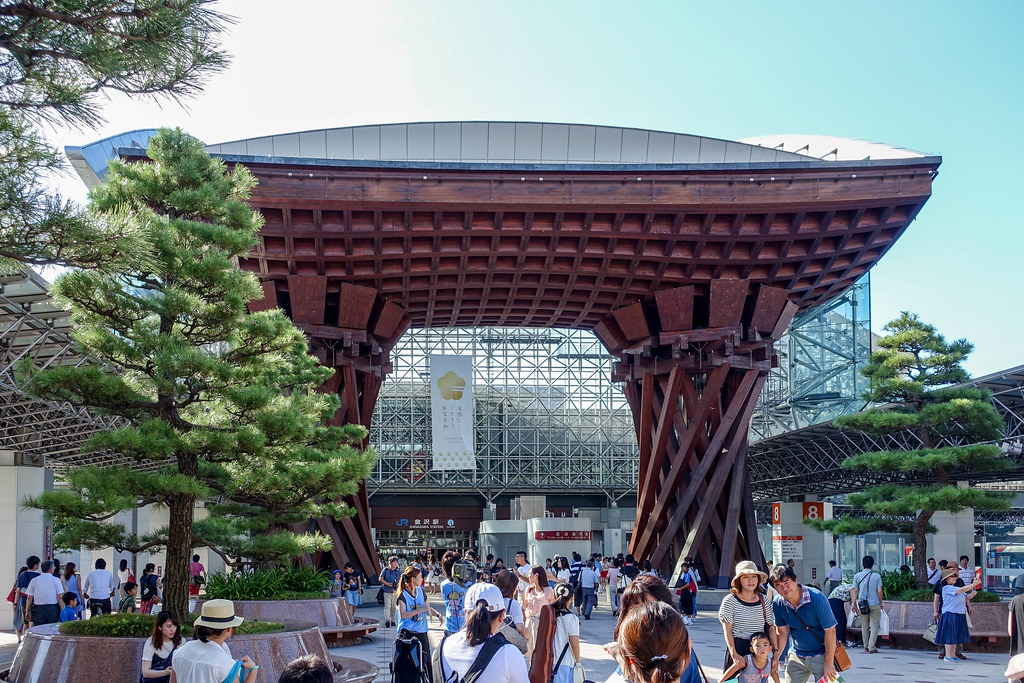
While waiting for our train to Osaka, Jan was approached to help review an English homework assignment. This wasn’t your typical “visit to the shop to buy bread and milk” language lesson, this assignment was about mixed-faith relationships, cultural gender roles and expectations in faiths like Islam, and homosexuality. Just throw your students straight into the controversial stuff there, Japan! This being Jan’s first experience as a language tutor, and the unexpectedly complex subject matter, we decided to skip our reserved train and catch the next one instead.

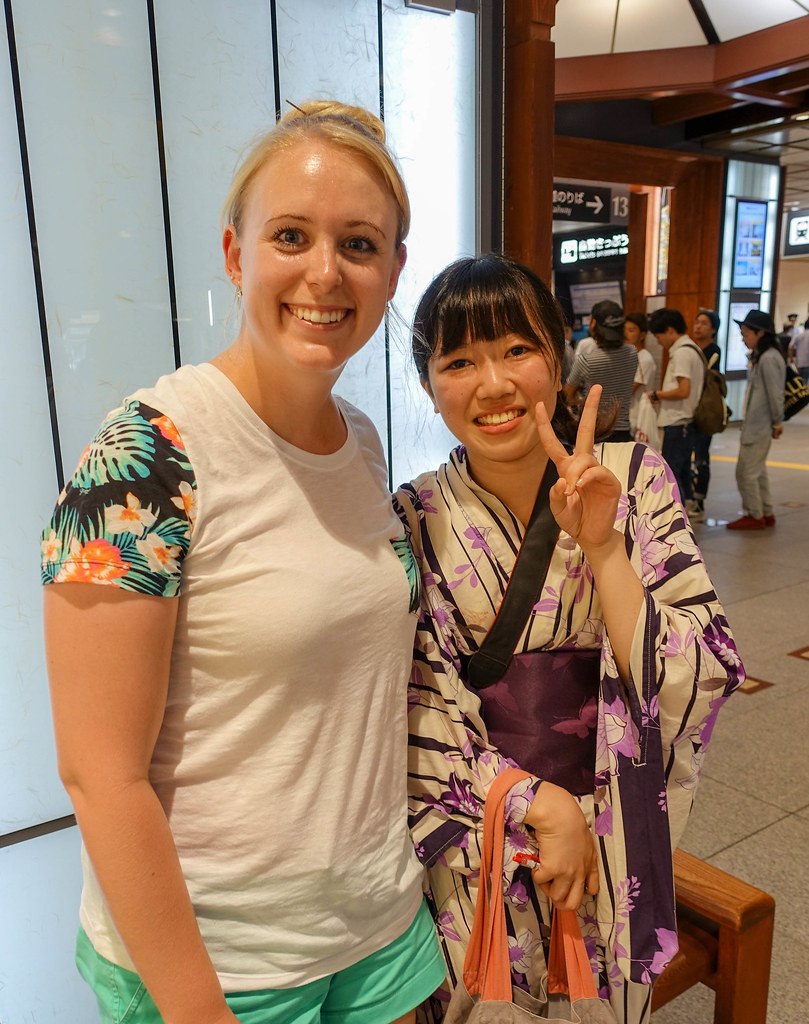
Accommodation
We stayed at the Hotel MyStays in Kanazawa. After our pleasant experience with this chain during our stay near Tokyo Haneda Airport, we gave this one a try. It turned out to be fantastic, with one of the largest rooms we saw anywhere in Japan, a 50 inch TV, plus the usual Business Hotel amenities like pajamas and an extensive selection of toiletries.
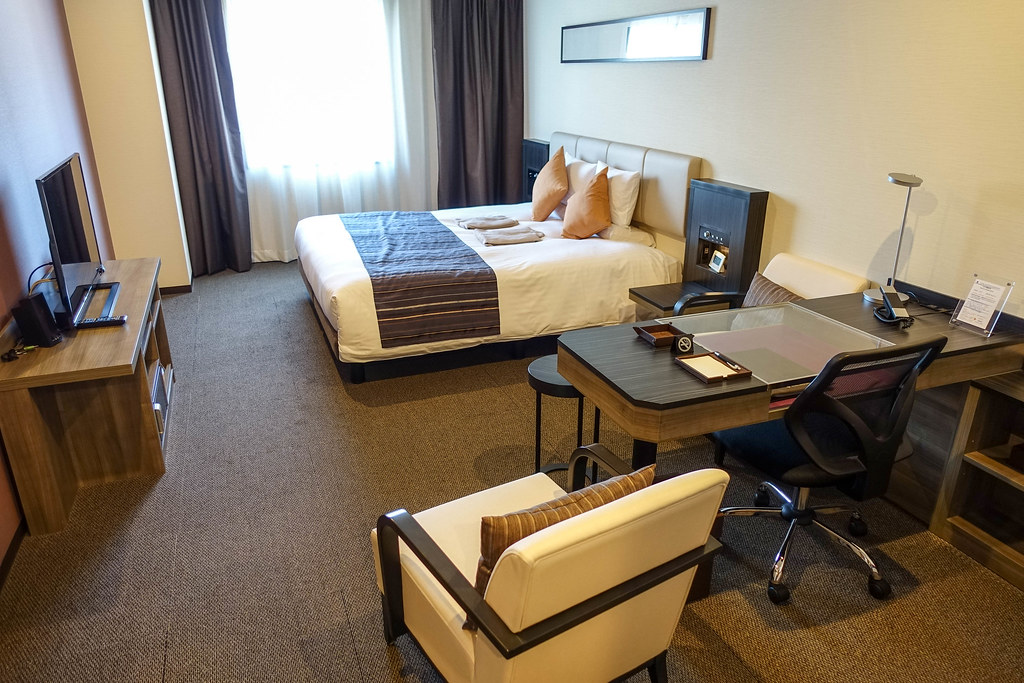
Links
Hotel Mystays Premier Kanazawa – mystays.com
Kaikaro Geisha House – www.kaikaro.jp
Ochaya Shima Geisha House – www.ochaya-shima.com
Kenrokuen Garden & Kanazawa Castle – link
Meboso (fishing lures) – meboso.co.jp (in Japanese)
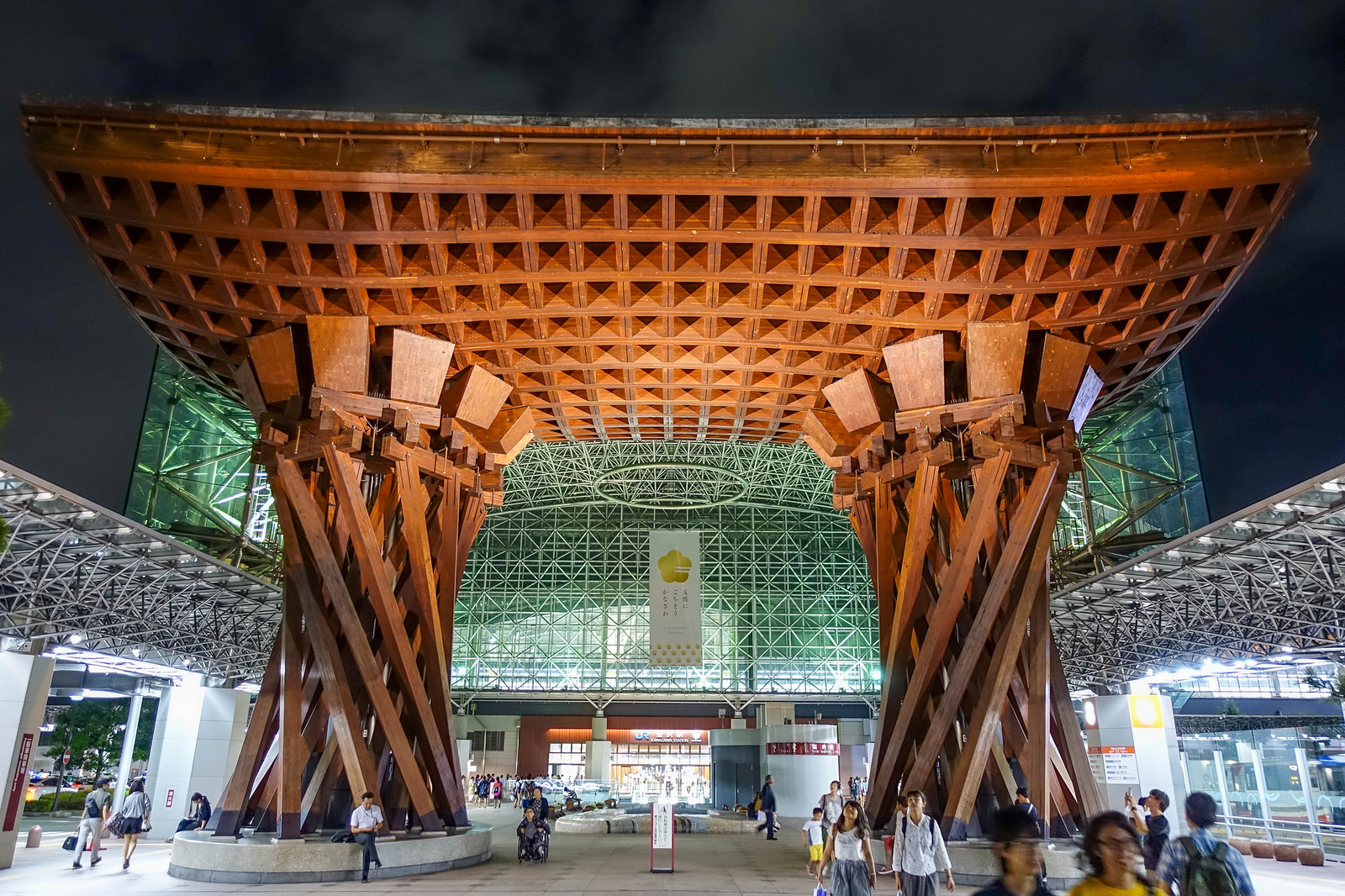
Very informative! I went to Kanazawa back in April and saw lots of the sights, however I was on my own and was unable to learnt a lot about the different areas.
Having been to these places, it’s so nice to learn much more about Kanazawa than I did. Which place will you write about next?
LikeLike
Glad you enjoyed it! Next up is an overnight visit to Osaka on the way to Kobe.
LikeLiked by 1 person
Osaka is up next!
LikeLike
Good post!
LikeLike